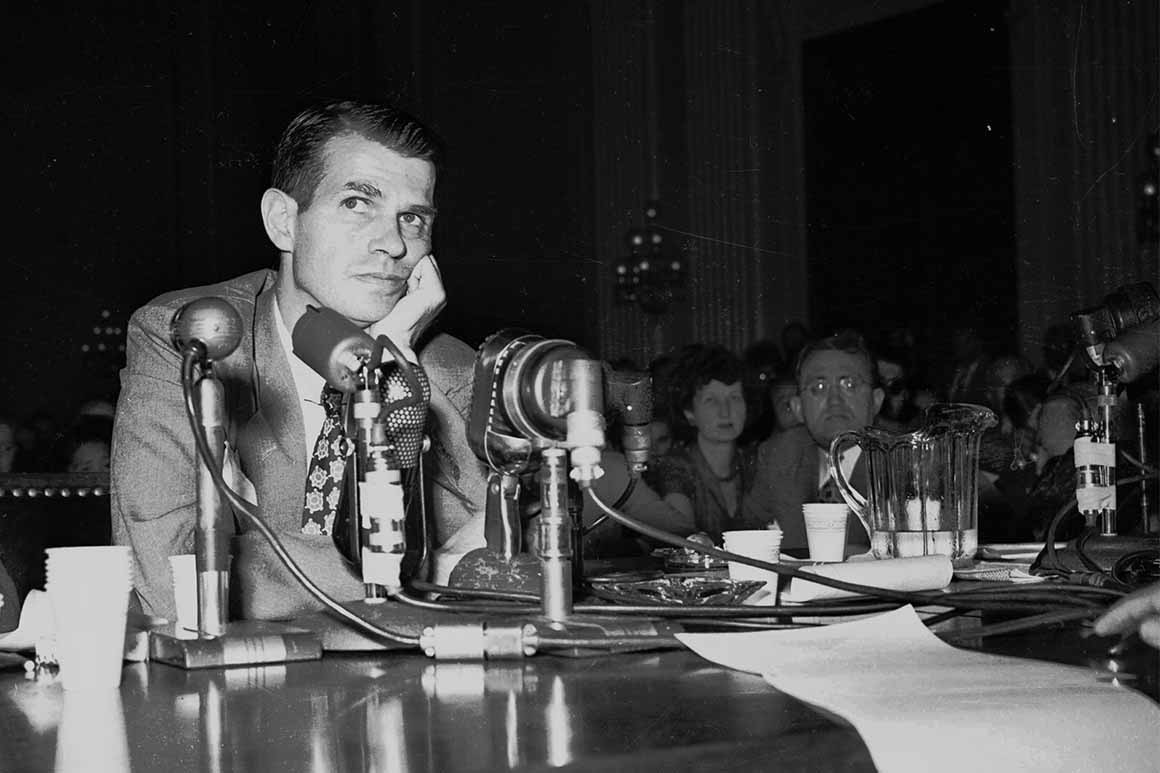
OSS founder “Wild Bill” Donovan is said to have given orders for covert operation that helped dramatically shift U.S. politics to the right
Alger Hiss was a former State Department official accused of being a Soviet spy who was imprisoned for almost four years at the federal penitentiary in Lewisburg, Pennsylvania, from March 1951 to November 1954, after being convicted on perjury charges.
The Hiss case was one of the iconic cases of the Cold War that fueled national hysteria and paranoia about Soviet espionage and subversion of the U.S. government.
The ascendant political right used the case as a weapon to attack and try to discredit Roosevelt Democrats who had ushered in the New Deal and forged a diplomatic agreement with the Soviets at Yalta that could have averted the Cold War.
The Hiss case is perhaps best known for helping to catapult a then-obscure California congressman named Richard Nixon, a member of the House Committee on Un-American Activities (HUAC), to national fame.
In a staged media event on the evening of December 2, 1948, HUAC investigators went to the Maryland farm of Time magazine editor Whittaker Chambers, who said he knew Hiss in the communist underground in the late 1930s, and unearthed classified State Department documents Hiss supposedly gave to the Soviets via Chambers in a pumpkin patch.
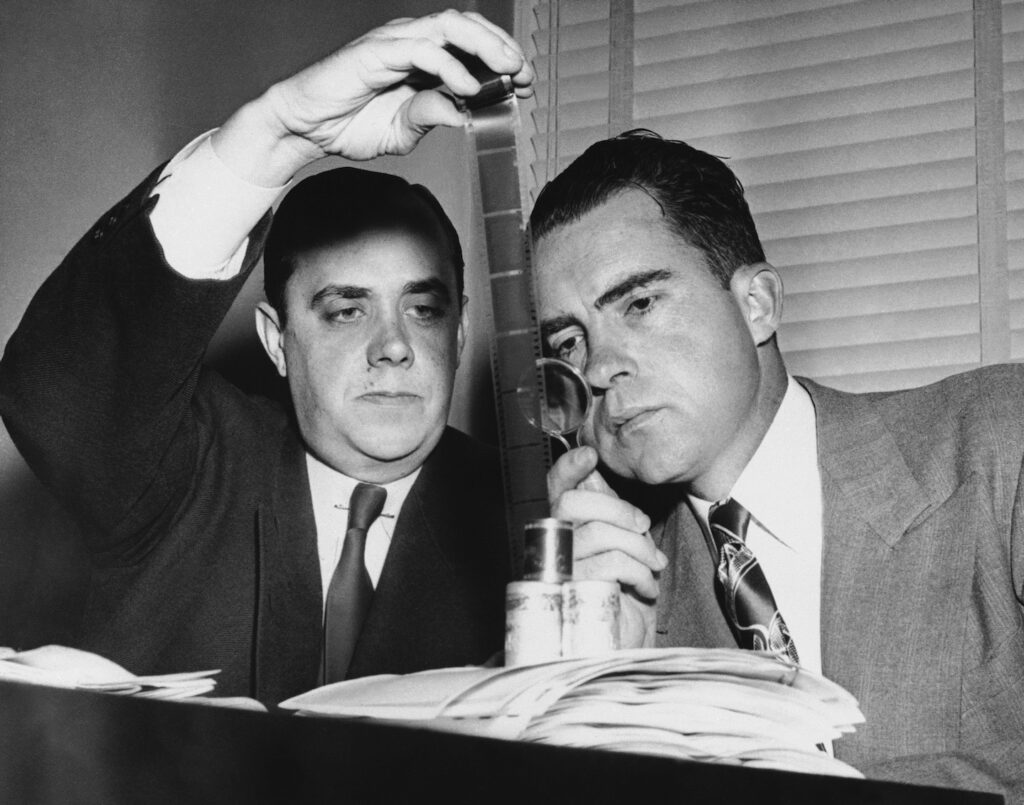
In 1968, syndicated columnist Drew Pearson wrote that “the pumpkin papers had been planted there as a phony but sensational plot so [Nixon] could discover them and make headlines.”[1]
Chambers indeed admitted that he placed the microfilm where the documents were stored in the pumpkin patch the morning of December 2 to add to the dramatic effect.
The documents were actually mundane ones that would not have compromised U.S. national security, and evidence indicates that Hiss never directly gave them to Chambers.
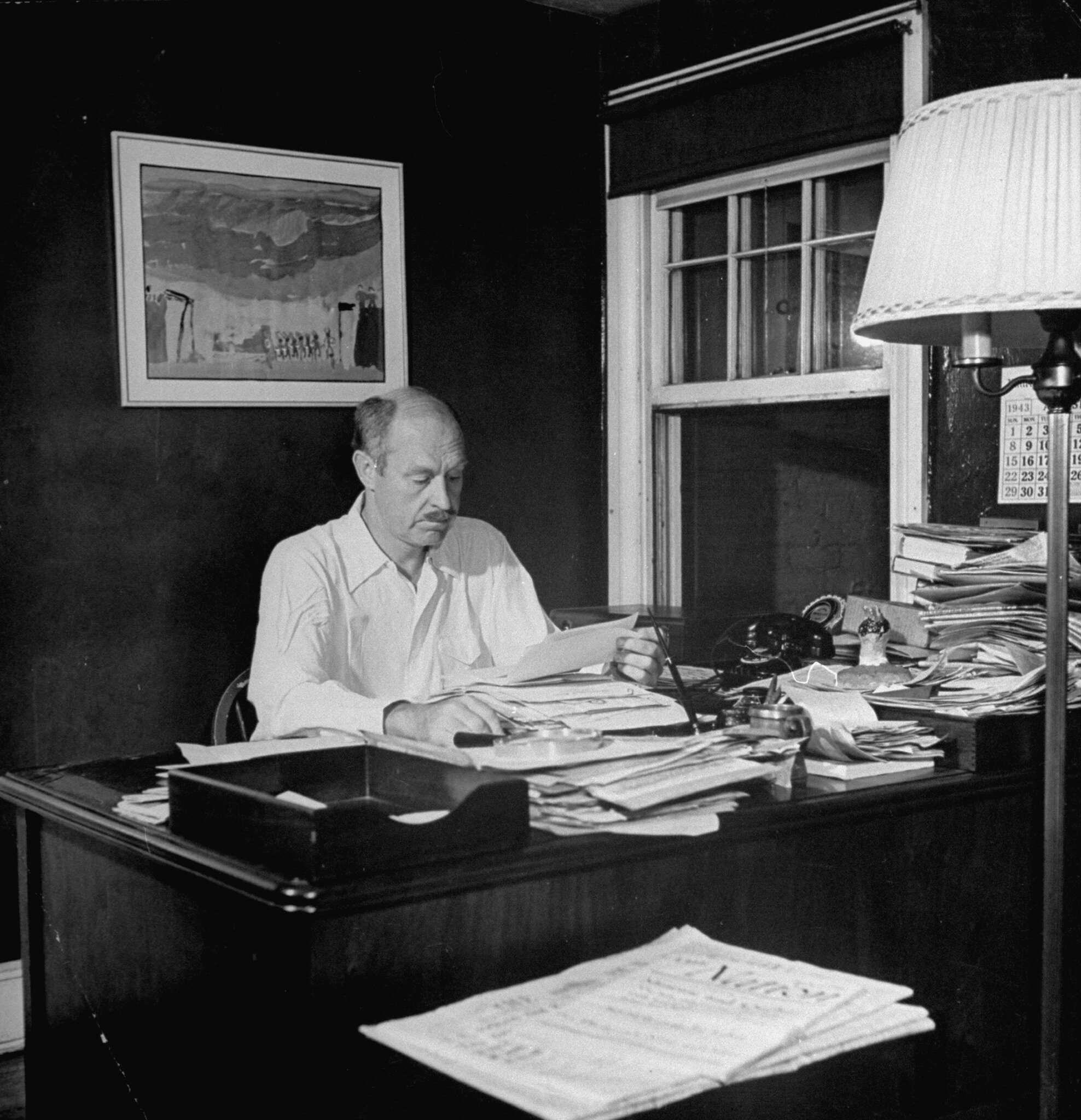
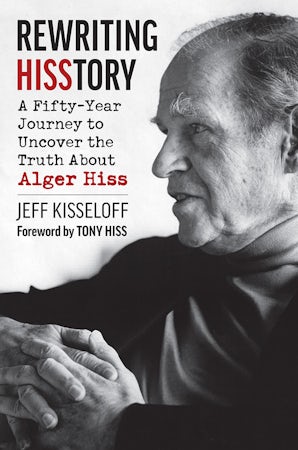
Jeff Kisseloff’s book, Rewriting Hisstory: A Fifty-Year Journey to Uncover the Truth About Alger Hiss shows beyond any doubt that Hiss was the innocent victim of a frame job, whose key culprits were tied to military intelligence and the CIA.
Kisseloff was a staffer on Hiss’s appeals team during the 1970s who has continued to research the case ever since.
His findings dovetail in certain key aspects with those of Stephen W. Salant, a University of Michigan economics professor whose decades-long research into the Hiss case has helped reveal the “unmistakable outline of a covert military operation to neutralize Alger Hiss.”
The motive for the covert operation was to facilitate a rightward shift in American politics and to bolster public support for an aggressive anti-communist foreign policy that served corporate power.
Kisseloff writes that “we have the Hiss case to thank for the Bay of Pigs, the Cuban missile crisis, and the Vietnam War”[2] among other horrendous events of the Cold War that the CIA was intricately involved with.
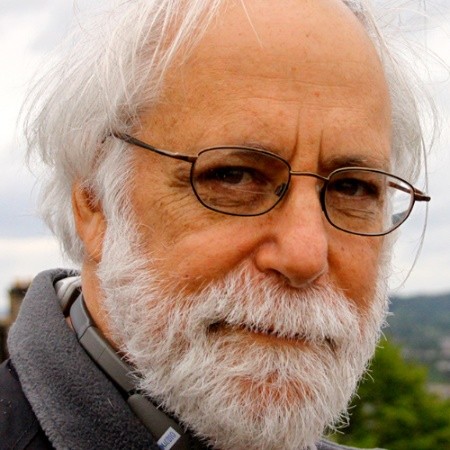
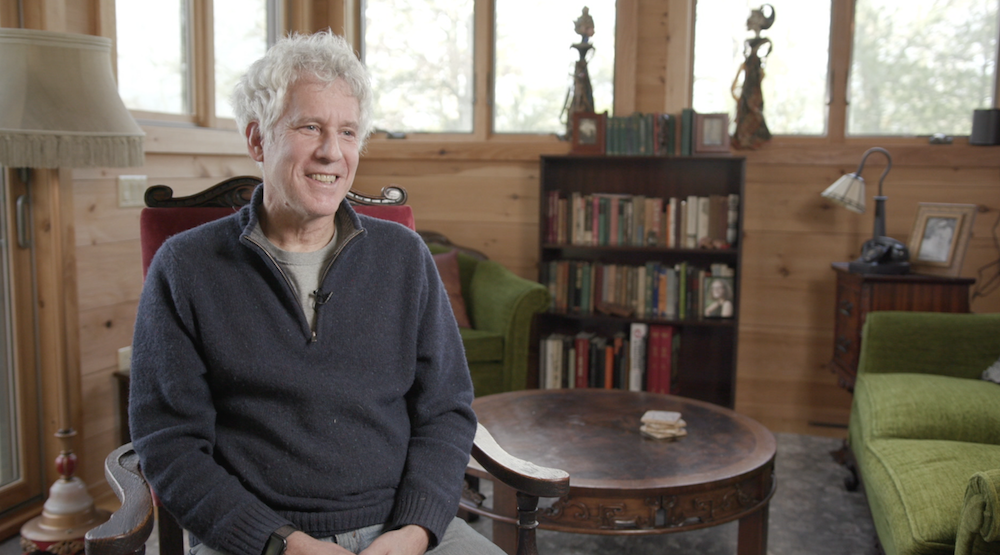
Fingerprints of U.S. Intelligence
According to Kisseloff, three main culprits in the frame job against Hiss who had links to U.S. intelligence were:
(1) Benjamin Mandel: A one-time business manager of the Daily Worker, the Communist Party USA’s newspaper, where he worked with Whittaker Chambers, Mandel turned hard right after being expelled from the Communist Party and became an investigator for the Rapp-Coudert Committee investigating leftist influence in New York State schools, and for the Dies Committee, the forerunner of HUAC, that investigated communist subversion in the U.S. Ghostwriter of Congressman Martin Dies’ book The Trojan Horse in America (1940), which accused the Roosevelt administration of “coddling subversives,” Mandel had long-established connections with members of Congress, U.S. Army intelligence, the FBI, the Office of Strategic Services (OSS), and then the CIA after it was founded in 1947. The latter agencies all valued ex-communists who could provide information on their former comrades in the Communist Party. Described by Kisseloff as a “person of extreme political passions” who was “vicious towards his enemies,” Mandel’s right-wing views were so extreme that he believed Nuremberg Trials prosecutor Telford Taylor’s criticism of IG Farben (the company that produced Zyklon B gas used by the Nazis to gas Jews) was “Communist-inspired” and part of an effort to “discredit American capitalism.”[3]
According to Kisseloff, Mandel targeted Hiss as part of a mission to bring down the Roosevelt administration in any way that he could. Mandel’s ties to the CIA came through Raymond E. Murphy, a State Department official in the Eastern European Division connected to the OSS and CIA whose primary job was to “smoke out commies,” and Jay Lovestone, a founder of the Communist Party USA who became the CIA’s top man in coordinating the infiltration of foreign labor unions. Lovestone and Murphy worked together in post-war Europe and Murphy amassed a huge file on communist subversives for the CIA that Mandel helped him with.[4]
(2) Isaac Don Levine: Born in Belarus in 1892, Levine served as a Communist Party organizer for Sacco and Vanzetti (two Italians wrongfully convicted of murder in famous case of 1920s), and went on to write or edit ten books that were stridently anti-communist. In the 1940s, he and Mandel established a bi-weekly news bulletin, Counterattack, that published lists of people said to be communists or fellow-travelers. Associated with the bulletin was the book Red Channels, which listed several hundred leftists in the broadcasting industry and was used as a kind of “blacklisters bible,” according to Kisseloff. With Mandel and China lobby co-founder Alfred Kohlberg along with other conservatives like Time magazine founder Henry Luce, Levine was part of a network of hard-line cold warriors who blamed Democrats for infiltrating communists in the U.S. government and pushed for the arming of anti-communist underground forces behind the Iron Curtain—which was fulfilled in the CIA’s Operation Rollback. According to Kisseloff, Levine’s work for the CIA was disclosed by a journalist named Ray Elson. Levine was on the board of an anti-communist foundation with known CIA operatives that included Jay Lovestone and Paul M. A. Linebarger, a CIA psychological warfare expert and worked with a CIA program to exploit Russian and Ukrainian emigrés. Levine was further involved in the JFK assassination coverup, helping to spread false rumors of Lee Harvey Oswald as a “commie lone nut” assassin, and serving as one of Marina Oswald’s CIA handlers, according to CIA expert H.P Albarelli Jr.[5]
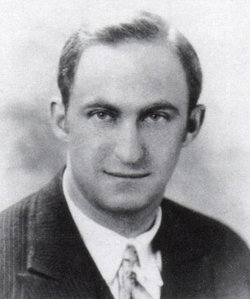
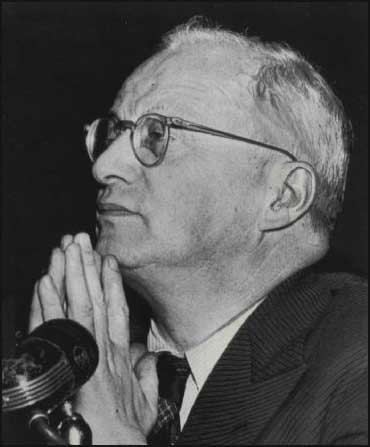
(3) Horace W. Schmahl: A native of Germany with a law degree who allegedly stole some embarrassing photos from Adolf Hitler’s private file, Schmahl was an FBI mole in the Hiss legal defense team where he worked as Hiss’s top investigator. At the time, Schmahl worked for the John G. “Steve” Broady detective agency (subsequently he set up his own agency, National Railways Security Bureau, Inc.) and was hired by the Debevoise law firm, which prepared a libel suit on behalf of Hiss. Unbeknownst to almost everyone, Schmahl was a secret agent of the U.S. Army’s counter-intelligence corps (CIC), or spy-catching agency, who confided to the FBI in 1948 that he worked for U.S. military intelligence.[6] Described as a “burly private eye,” Schmahl additionally worked for the Central Intelligence Group (CIG), an OSS successor agency, and CIA for whom he carried out black bag jobs that were directly coordinated by Richard Nixon when he was vice president. After the 1959 Cuban Revolution, Schmahl was involved with anti-Castro operations based in Fort Lauderdale, Florida.
During World War II, Schmahl had been a personal investigator for William “Wild Bill” Donovan, founder of the OSS who became godfather to his son and recommended him to the CIA. Schmahl was a graduate of the OSS spy school at Camp Ritchie where, among other things, students received instruction in forgery and how to detect it, and learned how to trace typing to the machine that produced it.[7] After Hiss was jailed, his lawyer, Edward C. McLean, received a tip that “Schmahl was implicated with the typewriter [that Hiss and his wife Priscilla allegedly used to type the documents passed on to Chambers and his KGB handlers].” An investigator who worked with Schmahl, Harold Bretnall, told McLean that Schmahl—who was in contact with Mandel—had been involved in forging the Hiss typewriter and that Hiss was framed. Tracked down in 1973 in Florida, Schmahl admitted to a Hiss investigator that he had been a “consultant” on the typewriter forgery, saying that the OSS had “set up Hiss” and that the orders had “come through Donovan’s law firm [Donovan, Leisure, Newton & Irvine].”[8]
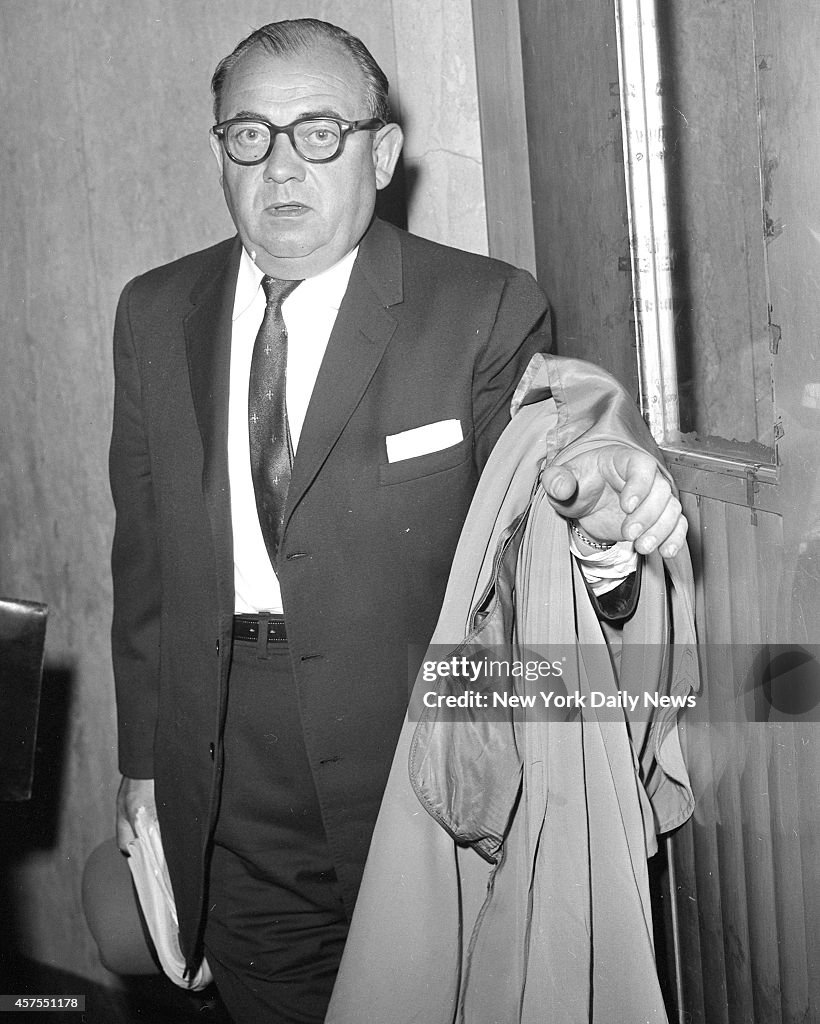
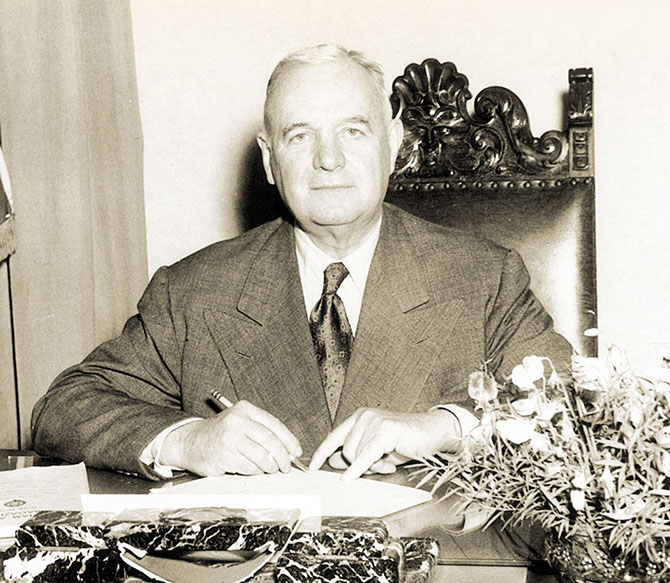
Key Facets of the Conspiracy
Kisseloff’s book emphasizes that Mandel, Levine and Schmahl set up Hiss in the following ways:
- They set up an operation to steal State Department documents from Hiss and others that could be used for the frame-job and other blackmail purposes. The latter was relatively easy to do because there was not much security at the State Department in those days.
- They enlisted Whittaker Chambers in their scheme by supplying him with some of the documents and getting him to testify that he had known Hiss when he was in the communist underground and that Hiss was part of a spy network that provided incriminating documents to the KGB.
- They constructed the Hiss family’s Woodstock typewriter and retyped the documents they had stolen—which forensics experts found to have been forged—to make it seem that Hiss’s wife Priscilla had typed the documents that were sent to Hiss’s alleged GRU handler. Kisseloff points out that Ben Mandel was the likely typist as he was an expert typist who had worked as a high school typing teacher.
- They fabricated, to make Priscilla’s involvement seem more plausible, stories to suggest that she was a member of subversive communist-front groups in the 1930s and a political radical, which she was not.[9]
- Alger Hiss’s radicalism was also played up when Hiss was known as a pragmatic and moderate New Dealer who had been opposed to Joseph Stalin’s efforts to expand the Soviet presence in the UN and backed the Marshall Plan, an economic aid program designed to isolate the Soviets. The FBI’s own investigation did not turn up a single person who believed that Hiss ever tried to influence them to adopt a communist-like line.[10]
Putting His OSS Training to Good Use
Stephen Salant’s research puts Horace Schmahl at the center of the conspiracy by suggesting that he had been sent by military intelligence to neutralize Hiss because they believed that he was a Soviet spy as a result of the Venona Papers—decrypted intelligence files that exposed the identity of Soviet spies, which were declassified in the 1990s after the fall of the Soviet Union.[11]
One Venona document disclosed a U.S. agent nicknamed ALES which was assumed to be Alger, although historians now believe that ALES could not have been Alger.[12]
After Schmahl got Hiss’s former housekeeper to help him recover Hiss’s typewriter, he fabricated a duplicate version so as to prove that Hiss and his wife had typed the pumpkin patch documents.
Schmahl had learned how to manufacture a typewriter in his OSS training. He tipped off Hiss’s lead counsel Edward McLean about the whereabouts of the one he constructed so McLean would submit it as a defense exhibit. McLean thought it would exonerate Hiss who said that neither he nor his wife ever typed any State Department documents on it.
After the first trial ended in a hung jury, Hiss was convicted in a second trial in which the prosecutor emphasized the significance of the typed documents and typewriter that allegedly proved Hiss’s guilt.
While imprisoned, Hiss filed a motion for a new trial with compelling evidence that the typewriter was a fraudulent exhibit, though to no avail.
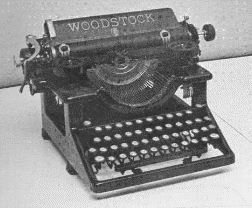
A key part of the Hiss team’s proof was that the serial number was not even manufactured until after the Hiss family typewriter had been purchased. The typeface also had unusual markings not found on Woodstock machines (Hiss’s typewriter was a Woodstock) and typebars had unusual composition.
During the Watergate crisis, Nixon reportedly said to an aide: “The typewriters are always the key. We built one in the Hiss case.”[13]
Judge Henry Goddard denied Hiss’s motion for a new trial because he did not believe that Chambers had the capacity to carry out an elaborate forgery, construct a duplicate machine and plant it so it would be found by Hiss. But Schmahl had that capacity—though his role as an undercover operative was perfectly disguised as a member of the Hiss defense.[14]
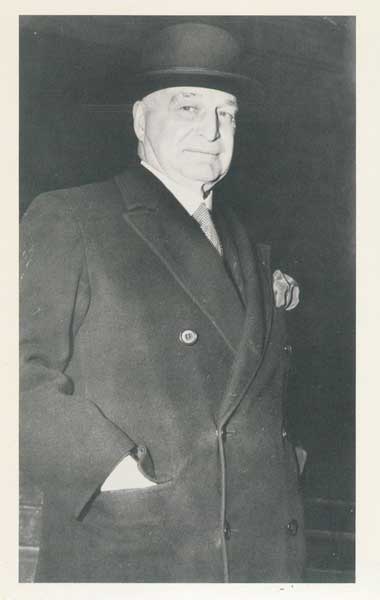
Chambers, Nixon and the Dulles Brothers
Whittaker Chambers’ links to military intelligence were exposed by journalist Victor Lasky, who reported that Chambers had told him that he had been an informant in the 1930s for the Office of Naval Intelligence (ONI).[15]
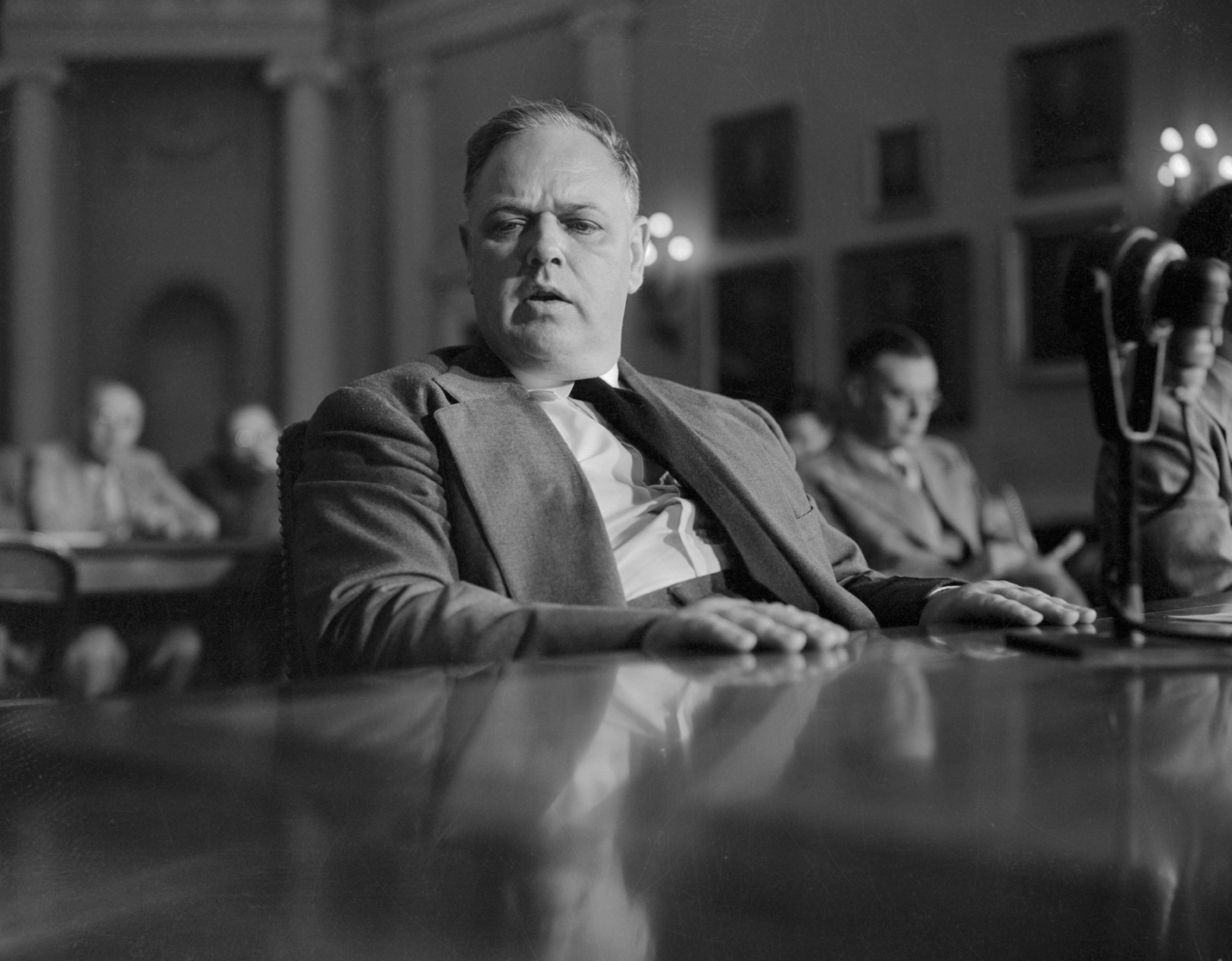
Richard Nixon’s ties to U.S. intelligence came through his symbiotic relationship with Allen Dulles, the CIA Director from 1953 to 1961. “Deep state” researcher Peter Dale Scott[16] notes that Nixon’s political ascendancy began in 1945 when, as a young naval officer, he had been tasked with reviewing captured Nazi documents and was told by Dulles to keep quiet about what he had seen. Dulles in return arranged to finance Nixon’s first congressional campaign in California against incumbent Jerry Voorhis (D), a New Dealer whom Nixon attacked as a communist dupe.
The bulk of the money that went to Nixon came through Gladding, McBean, one of the oldest companies in California, whose co-director, Herman Phleger, came to serve Dulles as legal adviser at the CIA.[17]
The incriminating documents that Nixon saw likely pertained to the role of the Dulles brothers and other Wall Street bankers in helping to refinance German debt in the 1930s and in taking on as clients German industrialists who financed the Nazi Party—extending to the period when the U.S. went to war with Germany, marking their actions as treasonous.[18]
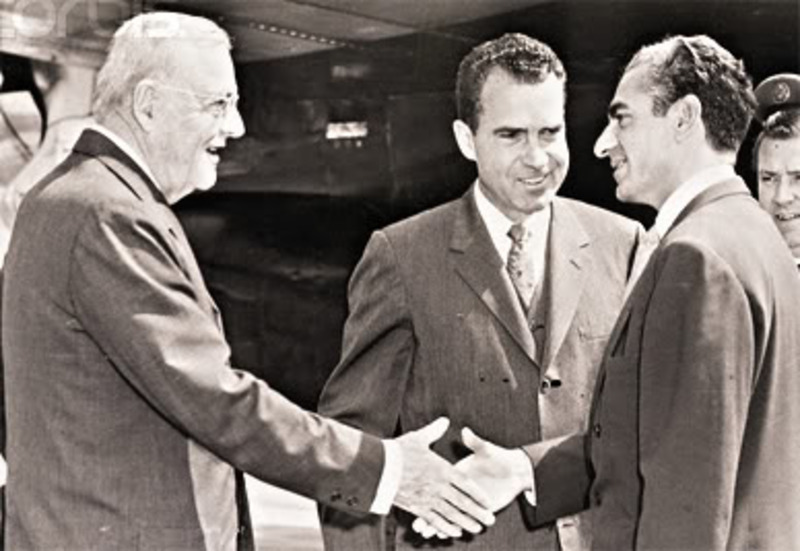
A double motive for Dulles in assisting Nixon’s 1946 congressional campaign was that Voorhis was the principal ally in Congress of Treasury Secretary Henry Morgenthau, Jr., and his deputy Harry Dexter White’s charges against the Bank for International Settlements (BIS) that it had violated the Trading with the Enemies Act by helping to finance Nazi-affiliated businesses during World War II.
BIS Director Thomas McKittrick was a close business partner of the Dulles brothers who during World War II passed onto him information he obtained from his Nazi contacts. Prescott Bush, who was part of the BIS financial complex, was also close to the Dulles’ and is thought to have flown to California to support the Nixon congressional campaign.[19]
In addition to pushing for an investigation of BIS, Voorhis had pressed for an investigation of the Rockefeller-owned Standard Oil Company (now part of ExxonMobil), which was represented by Sullivan and Cromwell, a firm Dulles worked for that has had long ties to U.S. intelligence.[20]
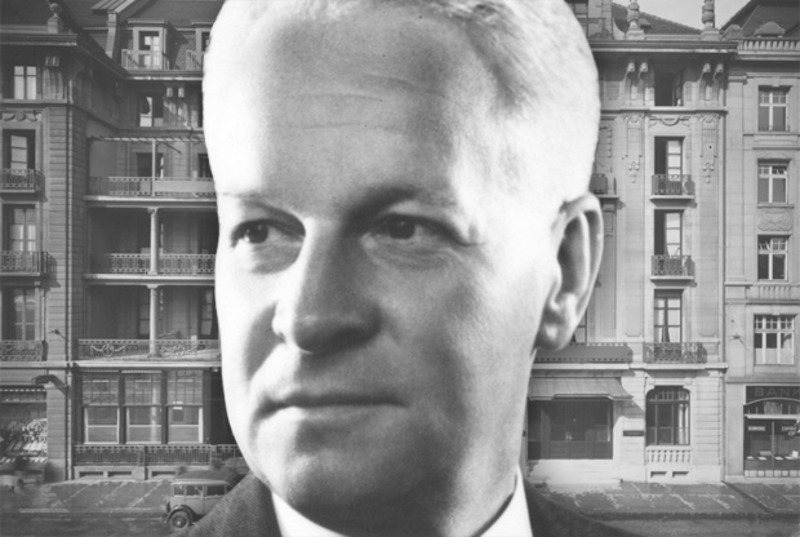
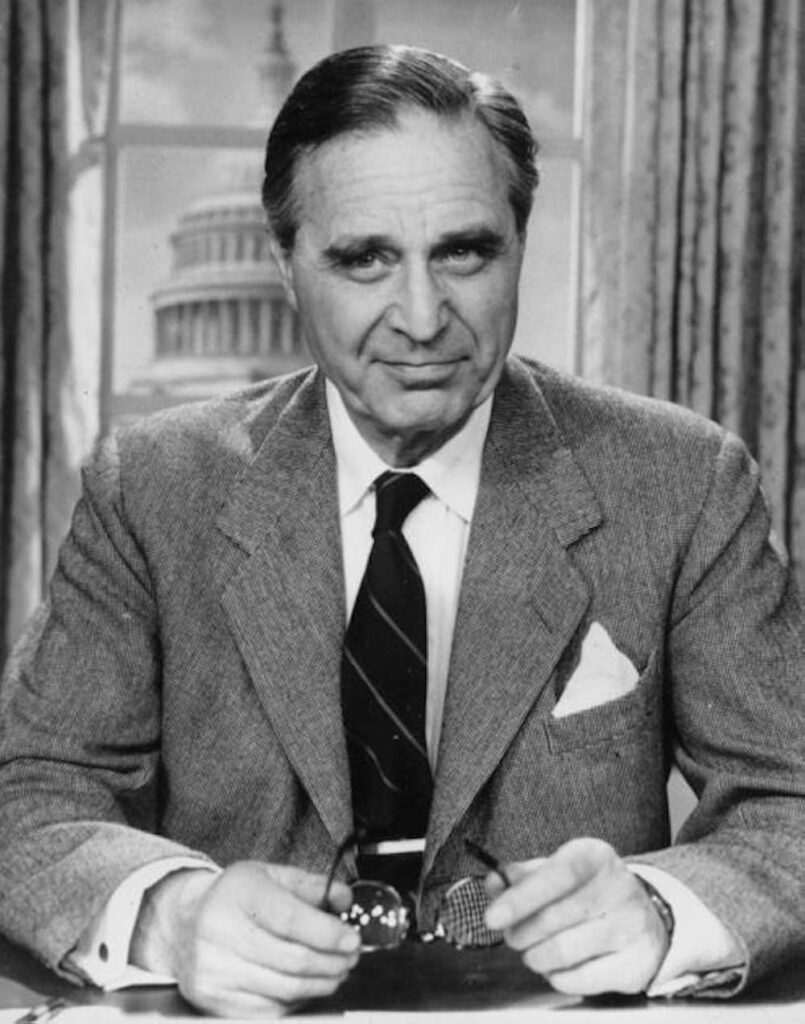
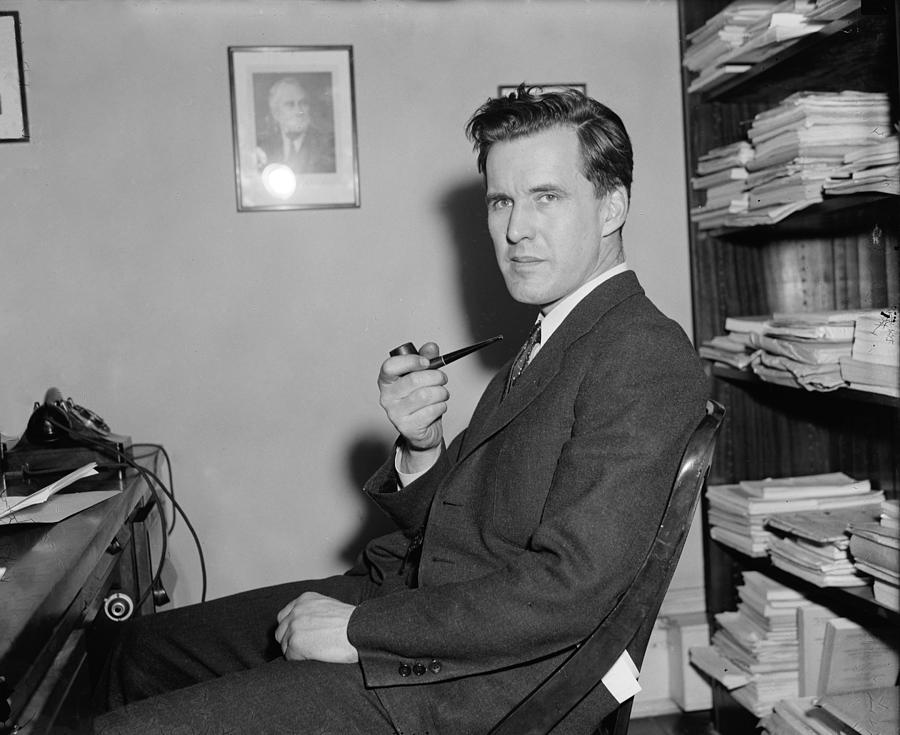
According to Peter Dale Scott, Allen Dulles was the one who tipped off Nixon that Hiss had known Chambers and may have also tipped him off about the existence of Venona documents that mentioned ALES.[21]
Dulles had had a run-in with Hiss years earlier, and was in close contact with “Wild Bill” Donovan (Dulles had been OSS Station Chief in Switzerland during the war), and likely privy to whatever the OSS had learned about Hiss and any black operations being directed against him.[22]
According to Scott, Dulles’ motive in setting up Hiss was to destroy the “Democratic New Deal by which the party under first Roosevelt and then Truman had restricted the traditional freedoms of Wall Street, and were now threatening to break up the oil cartel” whom the Dulles brothers represented.[23]
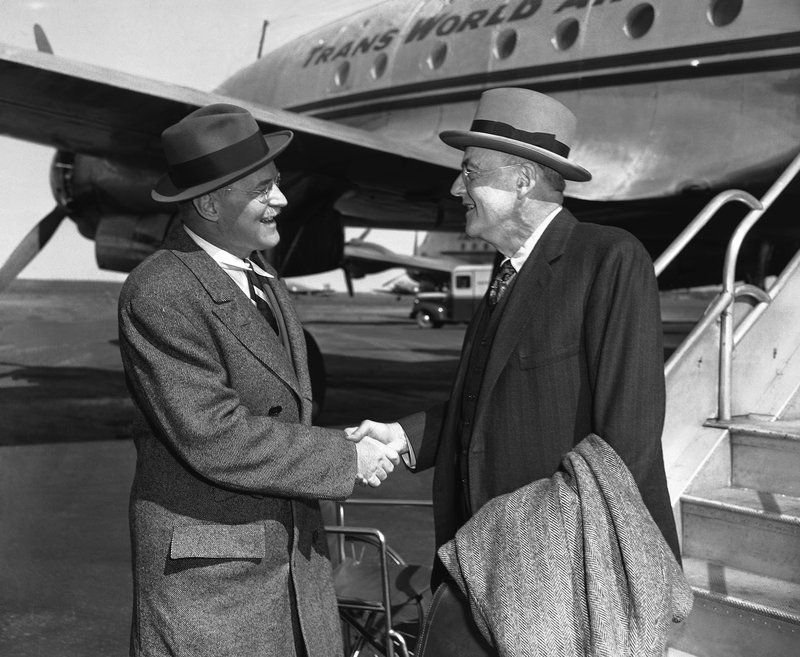
Additional Key Players
Another key player in the Hiss conspiracy-frame job was James F. Byrnes, Harry S. Truman’s Secretary of State, from South Carolina who came to the conclusion in 1946 that Hiss was a “cheeky radical thinker” and communist who “should be disposed of.”
According to Kisseloff, Byrnes’s disdain for Hiss was in part influenced by South Carolina Senator Ellison DuRant “Cotton Ed” Smith (D), who hated Hiss because, during his tenure working for the Agriculture Department, Hiss had supported New Deal legislation that would provide federal government subsidies directly to African-American sharecroppers rather than to Southern landowners. (Smith allegedly said “you’re going to send money to my ni—s, instead of me.”)
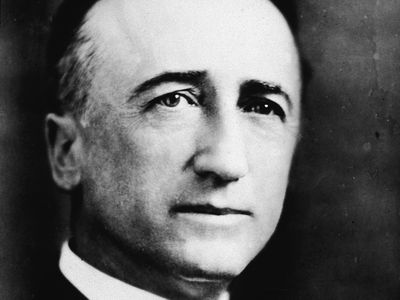
Additionally, when he worked for the 1934-36 Senate Nye Committee that investigated corporate war profiteering in World War I, Hiss had helped expose how South Carolina financier Bernard Baruch, a member of the War Industries Board, had made a fortune off the war but failed to file any taxes for that period.[24]
Two other figures in the anti-Hiss conspiracy, according to Kisseloff, were:
- Lenore Fuller: James F. Byrnes’s sister, who worked in FDR’s Agricultural Adjustment Administration (AAA) and levied the first accusation that Hiss was a communist spy. Vehemently opposed to Roosevelt and the New Deal, Fuller viewed Hiss as the most dangerous of Jerome Frank’s new hires at the AAA because, she said, he put a force to work for him to prove that “all landlords were crooks” in an effort to “stir up the share-croppers” and overthrow the land tenure system that had prevailed in the South for generations. According to Kisseloff, Fuller told FBI agents about Hiss’s supposedly radical views, which marked him as a potential subversive and, according to Alger’s son Tony, ensured that his “goose was cooked.”[25]
- Father John Francis Cronin: An anti-communist priest from Baltimore who helped build the Catholic Church’s role in the anti-communist crusade, Cronin compiled reports on communism for the Chamber of Commerce with Benjamin Mandel and worked to keep communists out of Baltimore’s labor unions. An FBI informant who was used by the bureau as a conduit for leaks, Cronin obtained some of the information for his reports from William Sullivan, who in 1961 was appointed the FBI’s head of domestic intelligence by J. Edgar Hoover. An adviser to Richard Nixon and his chief speechwriter, Cronin claimed to have informed Nixon about the allegations directed against Hiss in February 1947 and kept Nixon abreast of what the FBI had turned up on Hiss. In a widely circulated 1945 pamphlet, “Problems of World Communism,” Cronin had advanced FBI disinformation that Chambers was in a communist cell that infiltrated the AAA and that his companions included Hiss and others in the so-called “Ware” Group [discussed further below]. Cronin subsequently alleged that Hiss was the most influential communist in the U.S. State Department.[26]
- Louis Russell: Joining the FBI in 1937 after a short career in professional baseball, Russell worked for HUAC and Nixon as a lead investigator in the Hiss case and played a role behind the scenes. Journalist and CIA expert Jim Hougan described Russell as a “hard-drinking Washington spook.” CIA operative James W. McCord—a key figure in the Frank Olson assassination cover-up and CIA-Watergate operation which Russell was also involved in—called him in the early 1970s “an old associate.” Russell was a longtime employee of Maheu Associates, a private detective agency that operated under CIA cover and was closely associated with Richard Nixon.[27]
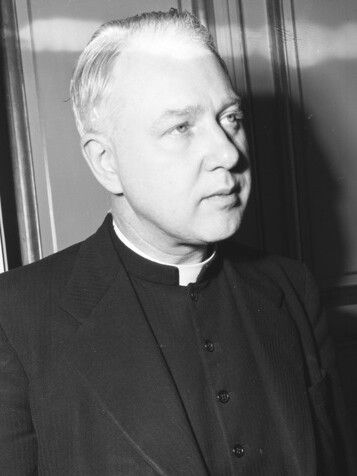
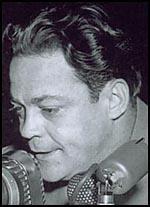
A Highly Promising Career Subverted
Born in Baltimore, Maryland, to a family whose American roots predated the American Revolutionary War, Hiss first became politicized as a boy when he heard William Jennings Bryan, the great populist leader, give a speech on behalf of Woodrow Wilson’s campaign in the 1912 election.
During the 1920s, Hiss attended Johns Hopkins University, where he remained a Democrat though he did not disagree with the pro-business philosophy that prevailed until the Great Depression.
At Harvard Law School, Hiss took two seminars with future Supreme Court Justice Felix Frankfurter who opened his eyes to the growing labor movement.
Hiss in turn wrote articles for the Harvard Law Review on issues related to unionism, wages and working conditions. Because of his success as a student, Hiss was selected to become Supreme Court Justice Oliver Wendell Holmes’ secretary.
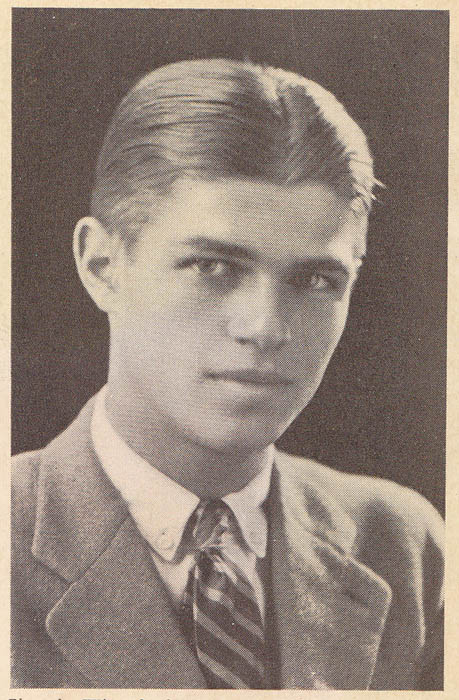
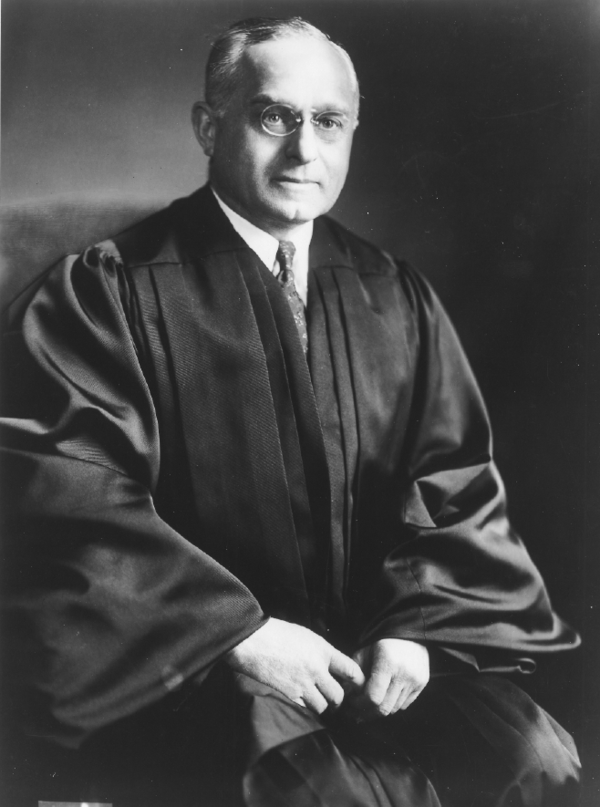
Around this time, he developed a distaste for the Hoover administration’s “narrow self-interested credo of big business,” though there is no evidence of him having joined the Communist Party.[28]
In responding to these charges, Hiss once said that he was “too damned busy doing a job to be even interested in communism during the 1930s,” adding that, “while some were talking about some kind of philosophic discourse on socialism versus capitalism…we were shoring up a failing economy and trying to make it work so there would be less suffering at the bottom.”[29]
After a stint as a corporate lawyer following his graduation from Harvard Law School in 1929, Hiss took a job with the AAA where he drafted the new rules that so angered James Byrnes and Lenore Fuller permitting government payments directly to sharecroppers.[30]
Hiss then moved on to the Justice Department and served as a counsel with the Nye Committee that investigated war profiteering in World War I. Subsequently, he worked for the State Department in the trade agreements division under Francis Sayre and then the Far Eastern Division under Stanley Hornbeck. He was also Secretary-General of the United Nations Conference on International Organization, the convention in San Francisco that drafted the UN Charter.[31]
In February 1945, Hiss went to the Yalta Conference in Crimea where the Roosevelt administration agreed to a Soviet sphere of influence in Eastern Europe in exchange for guarantees that the Soviets would not intervene in the Greek Civil War, among other things.
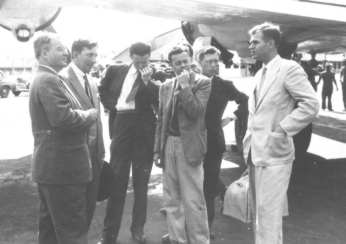
Aligned with the Roosevelt-Wallace wing of the Democratic Party that favored peaceful cooperation with the Soviets and an expansion of the New Deal, Hiss was known for his moderate and even conservative views among that faction.[32]
Hiss’s detractors cited his work in the 1930s with the International Juridical Association (IJA), the brainchild of leftist attorney Carol Weiss King, as reflecting his political radicalism, though Kisseloff notes that these detractors cannot point to any specific radical writings in the IJA journal by Hiss since none existed.[33]
Hiss’s writings from the period showed that his political positions, including pertaining to Lend-Lease aid and World War II, diverged from those of the Soviet Union and Communist Party USA.[34]
After he left the State Department and became President of the Carnegie Endowment for International Peace, Hiss became a prime mover of the Marshall Plan of aid to war-ravaged Europe, the centerpiece of the Truman Doctrine and its strategy of “containment” of the Soviet Union. Soviet leaders and the U.S. left denounced the Marshall Plan as creating a hostile encirclement of the Soviet Union and a war-breeding, anti-Soviet plan.[35]
Priscilla
A graduate of Bryn Mawr College near Philadelphia, who worked as a school teacher and, later, a magazine editor, Priscilla was accused of being a radical when the main evidence for that seems to be her having attended one meeting of a group, American Labor Associates (ALA), that was considered to be leftist.
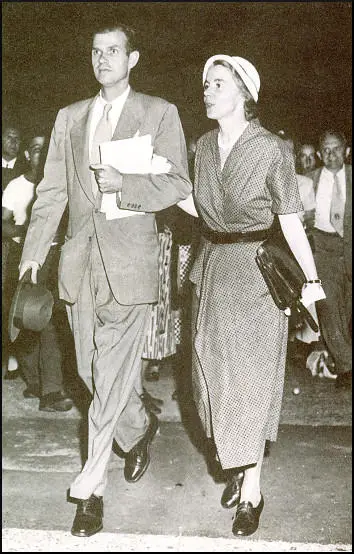
This group, incidentally, put out a single issue of its newspaper and was supported by economists who worked in the Roosevelt administration and were hardly radical. Among them was NYU Professor Howard Nunn, who was assigned by New Deal administrator Harry Hopkins to stem any influence of the Communist Party in the Works Progress Administration (WPA), the New Deal agency that oversaw public works programs.[36]
Kisseloff’s research indicates that, while Priscilla showed some interest in socialism in the 1930s, her interest was fleeting and that she was a mainstream liberal in her political outlook.
The only reference to communism in any of her correspondence was a letter in which she said that her sister had a “violent reaction” to The Daily Worker, the Communist Party newspaper; an indication that she hated it.[37]
The FBI determined that there was no evidence or information indicating that Priscilla Hiss had been a “card-carrying member of the Communist Party, or that she was attached to any particular Communist cell or branch, or that she attended Communist Party meetings.”[38]
Lies, Lies and More Lies
Whittaker Chambers, in his HUAC testimony against Hiss, claimed that Hiss’s espionage was carried out while he worked for the AAA and was part of the Ware Group, a network of leftists organized by Harold Ware, the son of legendary left-wing activist Ella Reeve “Mother” Bloor who were said to be affiliated with the Communist Party USA.
The actual goal of the Ware Group was to get more progressive people into Roosevelt’s New Deal administration, according to Ware, “who would respond to the growing popular movements for real relief.”[39]
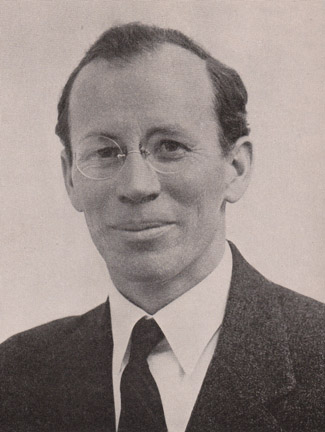
Kisseloff makes clear that there is no real evidence linking Hiss to the Ware Group—which Chambers actually knew nothing about. Members of the Ware Group never themselves faced espionage charges, and all said that they did not work with classified documents, and that Hiss was not a part of their group.[40]
Kisseloff wrote that members of the Ware Group, along with the Hiss brothers [including Alger’s brother Donald], “represented the best of the New Deal, whose accomplishments cannot be confused to a single paragraph. The same goes for others named by Chambers.”
Chambers emerges from Kisseloff’s book as a highly dubious witness whose veneration by later generations of conservatives is totally unfounded.
Rejected by his own father, which may have caused him to have serious psychological problems, Chambers kept changing his story about when and how he met Hiss and about his experiences in and out of the Communist Party.
He also said things about Hiss that were patently untrue while exposing his claim to have been Hiss’s “closest friend in the communist underground” to be a bald-faced lie.[41]
Whittaker’s wife Esther continued the pattern of lies when she claimed that she and her husband drank champagne at the Hiss’s anniversary party, though communist underground members were not allowed to drink and Chambers said he never drank.[42]
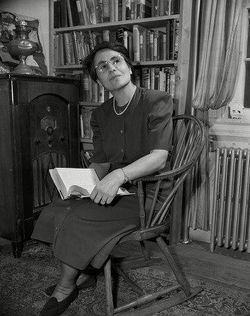
Whittaker Chambers claimed that he would pick up the Pumpkin Patch documents that Priscilla Hiss had photographed in the evenings and then return them in the morning before Hiss left for work after copying them. (Alger supposedly took documents home, Priscilla typed up summaries at night for transmission and photographed them and Hiss would return them to Foggy Bottom the next day.)
The problem with this story is that: a) Priscilla’s son and Alger’s step-son, Timothy Hobson, said they never saw Chambers at their home; b) neighbors said the same thing; c) the walls in Hiss’s home were notoriously thin and nobody heard Priscilla typing in the evenings—which they would have if she actually typed the documents; d) careful analysis of the documents showed they did not reflect the typing style of Priscilla Hiss; e) Chambers said the documents were typed in 1938 but the Hisses had given away the typewriter they supposedly typed them on in 1937; and f) KGB spycraft protocol specified that all meetings related to espionage matters have to take place outside and that documents have to be disseminated on the same day that they are received (they cannot be held overnight).[43]
If he was involved in an espionage operation, Chambers generally violated almost all the rules of how those operations are supposed to be carried out.[44]
Chambers’ history of making false accusations was apparent when Chambers could not identify numerous people he had told the FBI he had met or worked with in the communist underground. Many people he accused also said they had never met Chambers.[45]
Hiss claimed that, when he worked for the Nye Committee, Chambers, going by the name George Crosley, interviewed him for an article on the munitions industry in American Magazine.[46] Hiss then helped Crosley by subletting him an apartment next to his and allowing him to stay in his home for two nights. In addition, he lent him some money and allowed him to use his car, a 1929 Ford convertible.
In the end, Crosley never paid the rent or Hiss back for the money he lent him, though one day showed up at Hiss’s home and presented him with a Bokhara rug.[47]
Chambers later tried to claim that the rug was a gift for Hiss’s espionage activities from their Soviet handler, General Boris Bykov, although General Vitaly Pavlov, coordinator of KGB activities in Washington and New York from 1939 to 1942, said that the KGB would never give a source a rug as a gift; the only gift they might give would be a watch because it was not noticeable.[48]
Much Ado About Nothing
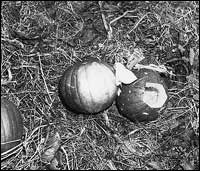
During the media spectacle—when Richard Nixon publicized the microfilmed Chambers had stored in his pumpkin patch—the public was led to believe that the documents were top-secret ones that helped the Soviet gain advantage over the U.S. in the Cold War.
In fact, as Kisseloff shows, they were mundane bureaucratic documents that General Pavlov said had “no documentary or informational value.”[49]
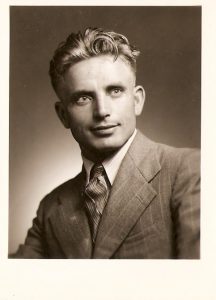
One of the documents that Nixon-Chambers pulled out of the pumpkin patch was a 1938 cable from William C. Bullitt, the U.S. Ambassador to France, to Secretary of State Cordell Hull, reporting on a conversation Bullitt had with China’s former ambassador to the Soviet Union about Japan’s invasion of China, which the Soviets already knew about.[50]
The other documents in the Pumpkin Patch collections were equally useless. One was a report on economic conditions in Manchuria that replicated information publicly available in a Japanese newspaper; others were manuals for Navy equipment, including rafts and fire extinguishers, that were publicly available and could in no way benefit the Soviet Union.[51]
Additionally, there were summaries of cables that actually left out information which could conceivably have been of some interest to the Soviets.[52]
Considering both the timing (the 1930s) and content of the documents, Hiss very clearly never violated any U.S. treason laws, which involve selling out to the nation’s enemy during wartime—even if he had provided them to Chambers to give to the Soviets, for which there is no evidence.[53]
The material that would have had perhaps some remote value to the Soviets in the original documents was actually left out of the typed documents, showing the whole case to be a fraud.
Stolen Files
The most likely scenario is that Chambers stole the Pumpkin Patch documents he had from Hiss’s home and office as part of the set-up.
A journalist friend of Chambers, Ella Winter, who married legendary muckraker Lincoln Steffens, told journalist Bill Reuben that, around 1934, Chambers approached her to ask her to steal documents from the State Department, which she refused to do.[54]
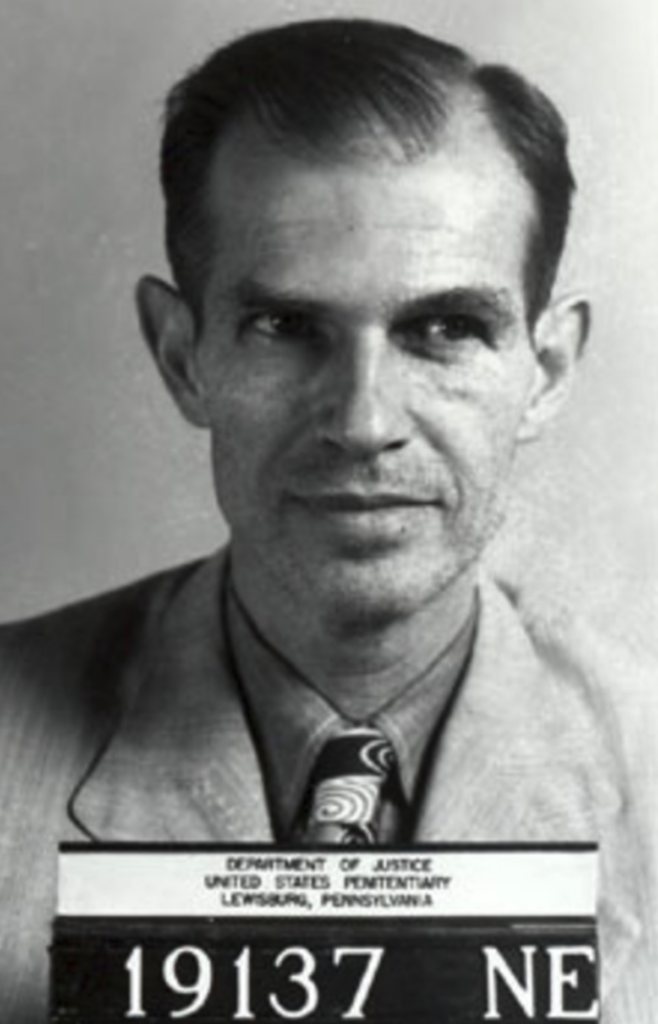
The FBI’s Shameful Role
FBI Director J. Edgar Hoover was a zealous right-winger and anti-communist who recognized the political importance of the Hiss case and ensured that the full weight of the FBI was used in bringing Hiss down.
Hoover’s FBI played a dubious role in facilitating Hiss’s conviction by, according to Kisseloff, “intimidating witnesses, suborning perjury and hiding exculpatory evidence.”[55]
The FBI knew all along that the typewriter supposedly used by Priscilla Hiss to type the incriminating copies at home was not the Hisses’ typewriter—something Alger learned 26 years after the trial as a result of a lawsuit he filed through the Freedom of Information Act.[56]
When Richard Nixon interrogated Hiss before HUAC, he was being fed information by FBI agents acting with the approval of Hoover.
Kisseloff further details how FBI agents spent hours “coaching” Chambers on his testimony and escorted him to visit several places he claimed to have been with the Hisses.[57]
Kisseloff said that much of the coaching with Chambers and his wife Esther crossed the line into suborning perjury, which is a crime.[58]
The FBI planted at least two moles in Hiss’s defense team, including Schmahl and Francis Sayre, the former U.S. High Commissioner of the Philippines who had been one of Hiss’s bosses at the State Department.[59]
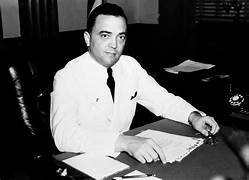
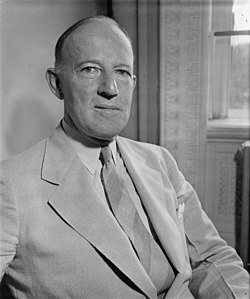
Additionally, the FBI appears to coerced Hiss’ stepson Timothy Hobson to prevent him from testifying by threatening to reveal that he was gay, which was taboo in 1950s America.
Hobson’s testimony could have helped exhonerate Hiss by deunking many of Chambers’ claims.
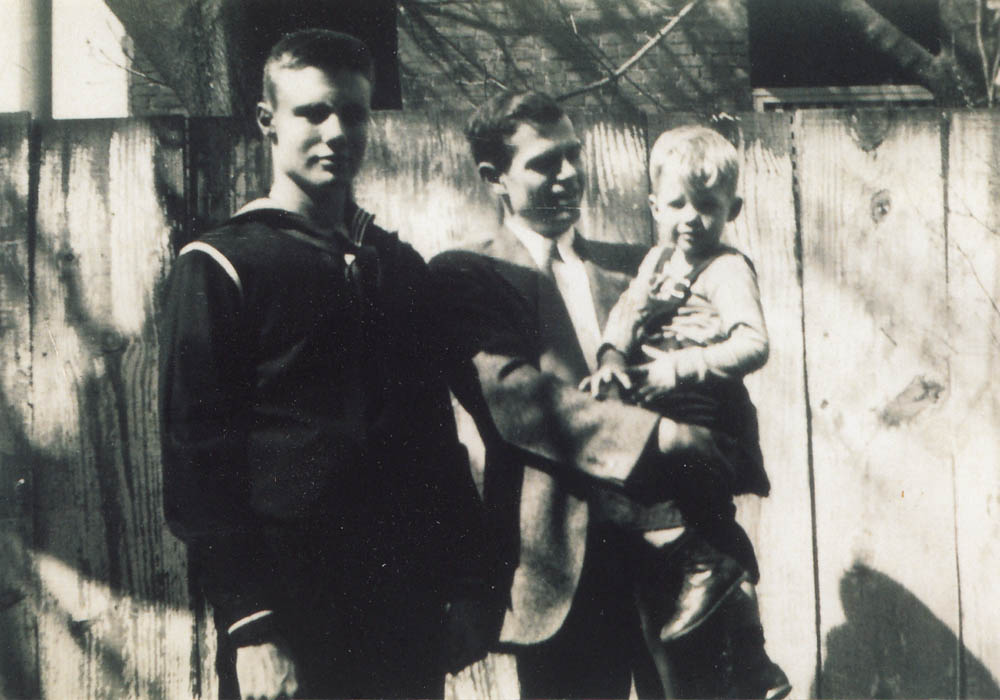
More Fakery
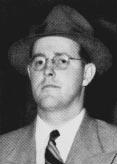
FBI Special Agent Robert Lamphere wrote in May 1950 in the Venona document referencing ALES that ALES was “probably Alger Hiss.”[60] The document was in turn leaked to a Senate committee headed by Daniel Patrick Moynihan (D-NY), who was friendly toward U.S. intelligence agencies and close with Richard Nixon, serving as a top adviser on urban problems in his presidential administration.
Lamphere’s activity was very suspicious because we now know that ALES was not Alger, with the term “probably” making clear that proof of the correlation was not definitive.
In hindsight, it looks like the FBI was trying to set up Hiss in collaboration with other intelligence agencies and right-wing politicians involved in the frame-up.
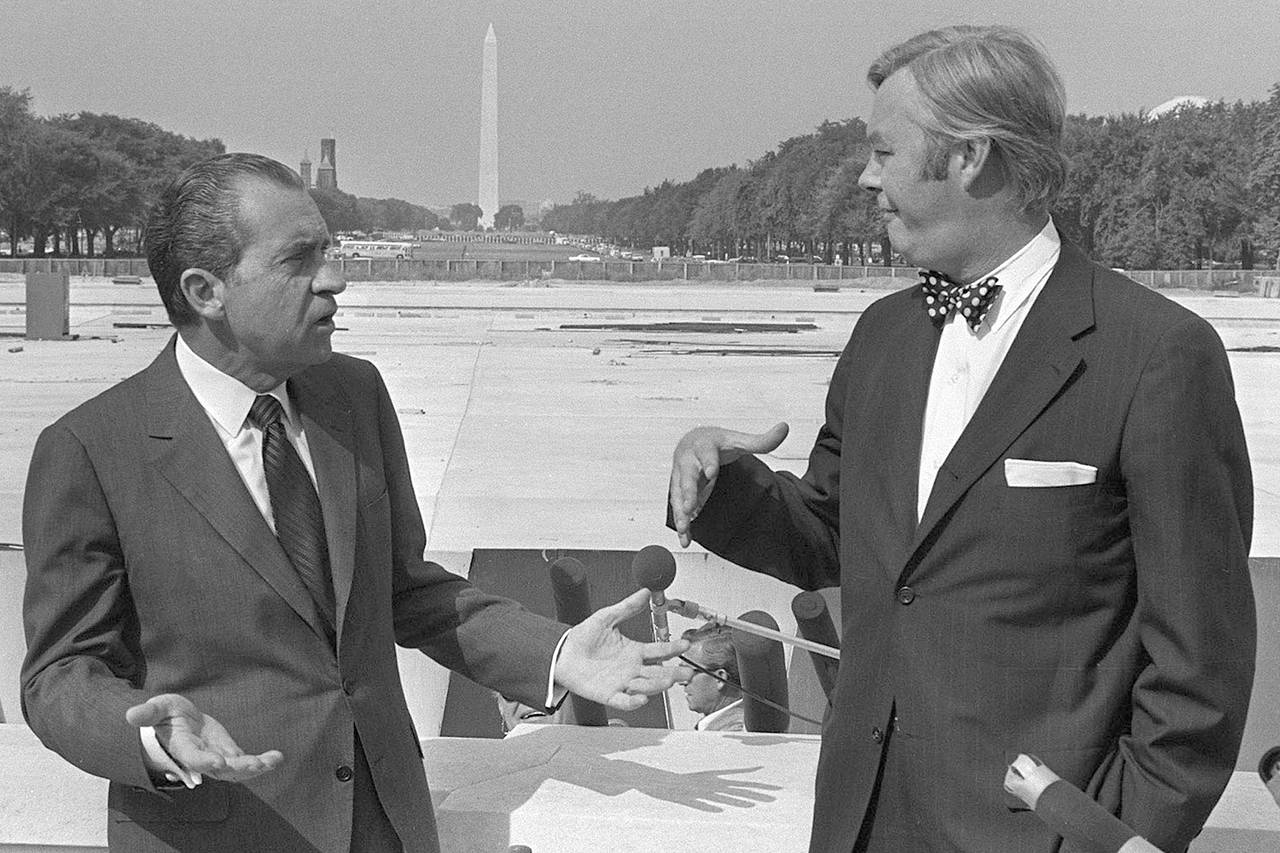
Much Ado About Nothing II
Proof that ALES was not Alger lies in the fact that ALES was identified as being in Mexico after the Yalta Conference when Alger was in Washington.[61]
Further, ALES was accused of supplying military documents to which Alger, as a State Department employee, did not have access and were not revealed in the Pumpkin Papers.[62]

Kisseloff, additionally, notes that the authenticity of the ALES documents is suspect and the timing is off, since ALES supposedly started sending State Department documents to his Soviet handlers in 1935, when Alger was working on the Nye Committee where he did not have access to any original State Department documents.[63]
Since ALES appeared in the document without a first name or cover name, experts believe that ALES was a first-time reference unknown to Soviet intelligence and not a spy.[64]
The ALES group, additionally, was said to include members of ALES’s family, but Hiss’s family members were never associated with communism or left-wing groups, as the FBI confirmed. Even Chambers testified that Alger’s brother Donald never committed espionage.[65]
In 1992, Colonel General Dmitri Volkogonov, head of the Institute of Military History of the Russian Defense Ministry and later adviser to President Boris Yeltsin on defense and security questions, said he had a search done through the KGB files and there was no sign that Hiss had been an agent, paid or otherwise.[66]
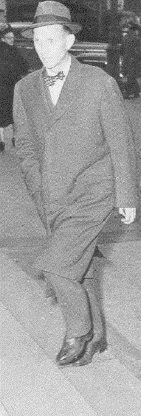
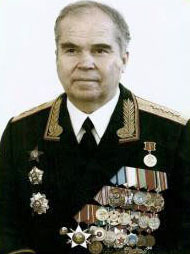
Yevgeni Primakov, then-Director of the Foreign Intelligence Service, said the same thing.[67]
Besides the Venona documents that actually exonerate Hiss, historians who claim Hiss was a Soviet spy point to additional incriminating documents from the Soviet archive released after the collapse of the Soviet Union that have never been authenticated or seen by other scholars.
They also take the word of communist turncoats of dubious reliability who testified before HUAC, like Chambers and Hede Massing—whom the FBI considered a “Viennese actress with a doubtful reputation.”
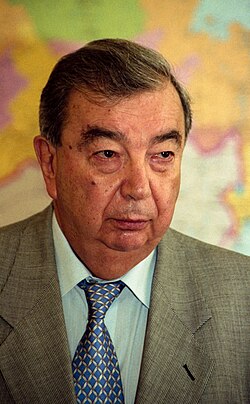
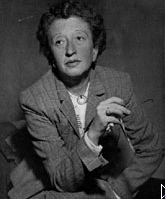
Many of these turncoats were offered incentives for “naming names,” such as being given a U.S. visa when they were facing deportation, or tried to make money from their newly found fame.
Neo-conservative historians Allen Weinstein, Harvey Klehr and John Earl Haynes point to the discovery of a confession by a State Department official accused of being a spy named Noel Field in a Hungarian secret police file that identified Hiss as a communist spy.
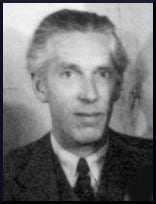
Most historians, however, are wary about secret police files as a source because people will often say anything under duress that they think might prevent them from being tortured, or might help them to be freed.
Field also had been close to Allen Dulles, serving as an OSS liaison to communist resistance groups in Europe during World War II, and could have been told to identify Hiss as part of the covert operation frame-up.[68]
Most significantly, Field wrote a letter to Hiss some years after his release from prison relaying his recognition of Hiss’s innocence. Field said that Hiss had been convicted based on “the testimony of a perjured witness [Hede Massing as well as Whittaker Chambers].”[69]
Yellow Journalism
The media played a crucial role in ensuring the success of the covert operation against Hiss by presenting him as being guilty. Kisseloff writes that “reading through the news clips now, one realizes how poorly Alger was treated in the press from the start, with reporting that was both lazy and inaccurate.”[70]
Bert Andrews of The New York Herald, who had won a Pulitzer Prize in 1948 for articles exposing HUAC’s witch hunting practices, was particularly influential operating as a “kind of consigliere” to Richard Nixon who “used him to leak certain inside details that would make Alger look bad,” according to Kisseloff.
Nixon later bragged that “we won the Hiss case in the papers. We did. I had to leak stuff all over the place….It was won in the papers. We’re destroying these people in the papers.”[71]
On December 4, 1948, The New York Times ran a front-page story by William H. Lawrence—who three years earlier falsely reported that there was no radioactivity in the Hiroshima ruins—stating that “the microfilm copies of documents of tremendous importance” had “been taken from the State Department [by Chambers] for transmission to Russian communist agents.”[72]
Kisseloff shows this to be a complete lie, as was the New York Daily Mirror’s even more scurrilous claim that “hundreds of microfilms of top-secret war documents [taken from the pumpkin patch] revealing a vast network of Communist espionage within the State Department have been seized on a nearby Maryland farm.”[73]
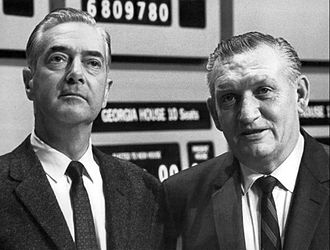
Psychological Warfare Campaign Extends to the Silver Screen
Just a few years after the release of the Venona files in the mid-1990s, an episode of the popular NBC political drama The West Wing featured a granddaughter (played by Jolie Jenkins) seeking a presidential pardon for an accused spy named “Daniel Gault” who, like Hiss, had attended the Yalta Conference and, like Hiss, had long professed his innocence.
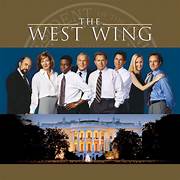
In that episode, the National Security Agency (NSA) shows the presidential adviser preparing Gault’s pardon case a thick top-secret file, which contains evidence convincing the adviser that Gault was indeed a spy.
The episode extended a long psychological warfare campaign whose purpose was to engrain in the public the belief that Hiss was guilty and that the post-World War II “Red Scare” was rooted in real national security concerns.[74]
Significantly, the episode was written and produced by Lawrence O’Donnell, a former legislative aide to Senator Daniel Patrick Moynihan, a godfather of the neo-conservatives and former member of the Senate Intelligence Committee, which long helped shield the CIA and other intelligence agencies from public accountability.
Following the release of the Venona papers, Moynihan gave the closing address at a conference at the National War College hosted by Allen Weinstein, who had been appointed national archivist after writing a book asserting Hiss’s guilt.[75]
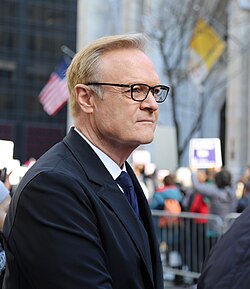
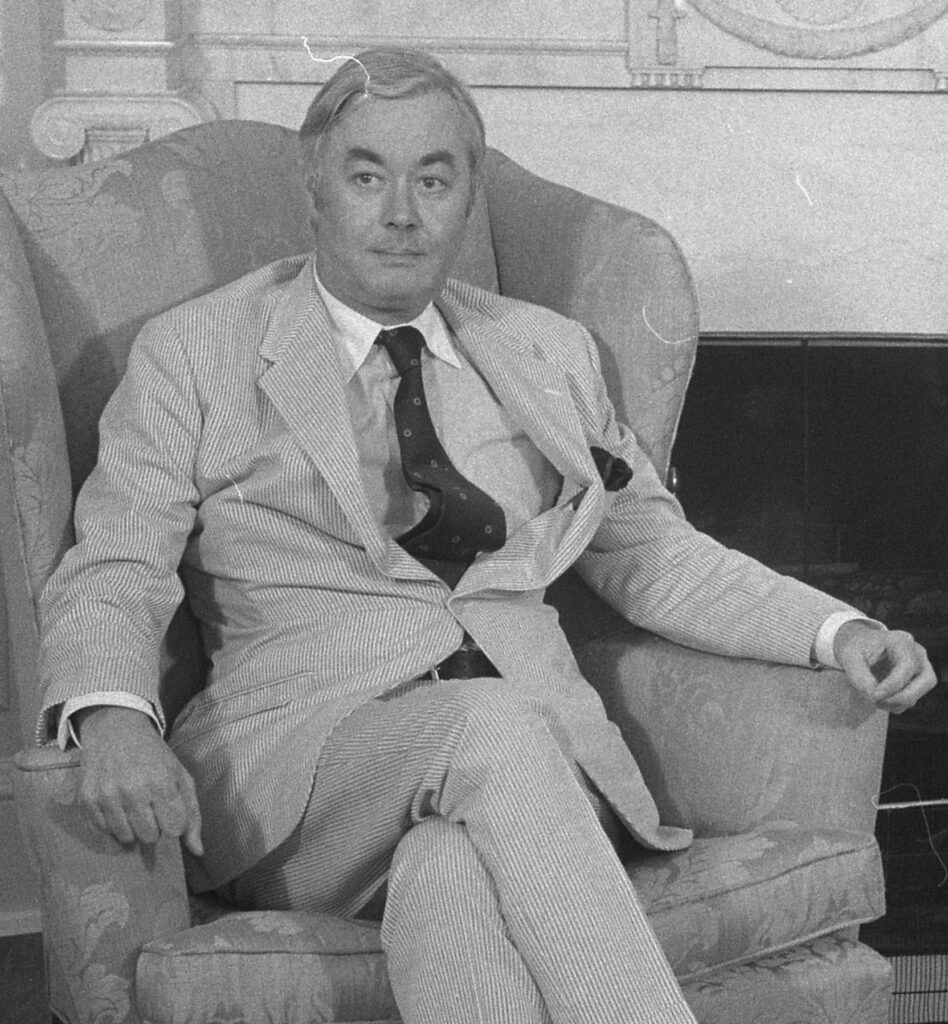
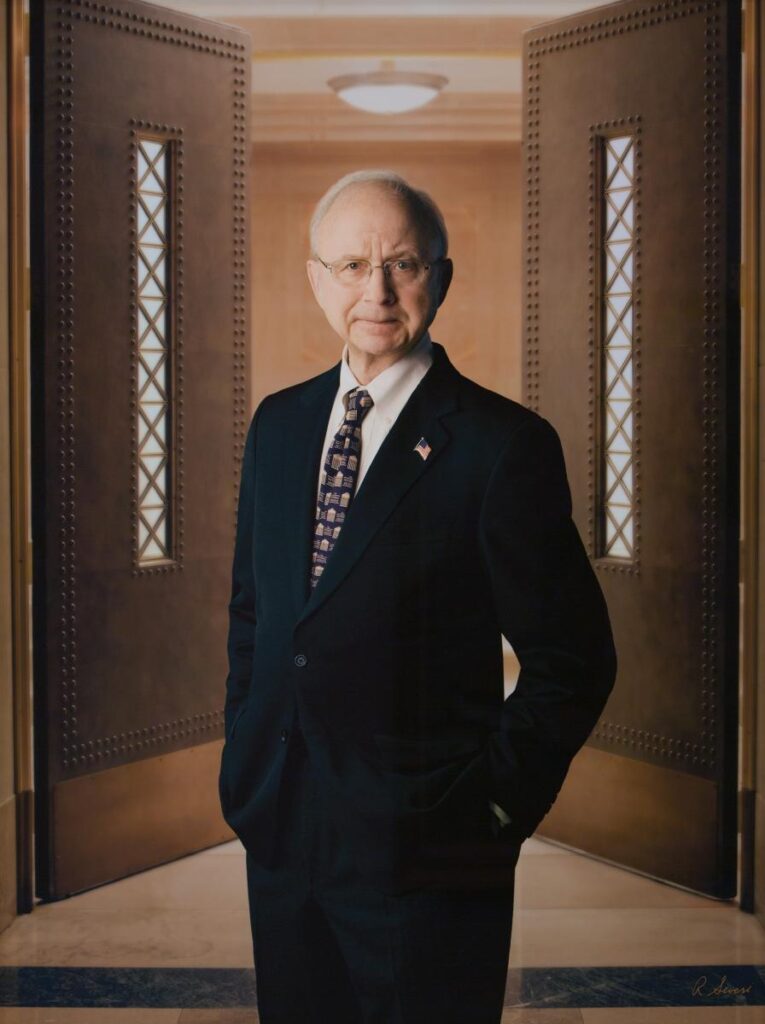
“The Knives Are Still Out for Him”
With the U.S. currently engaged in a new Cold War, the Hiss case remains politically charged and toxic. After publishing his book—which sets an extremely high standard for research quality and argumentative logic—Kisseloff was subjected to a vitriolic attack by Harvey Klehr in Commentary magazine, an organ for neo-conservatives.
Klehr’s review accused Kisseloff of being a conspiracy theorist and asked why a university press would publish Kisseloff’s “work of delusional madness as a nonfiction book.”
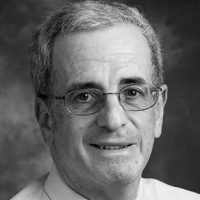
As if anticipating Klehr’s response, Kisseloff wrote in Rewriting Hisstory that “more than seventy years after Hiss’s conviction, the knives are still out for him. Do a search on X for ‘Alger Hiss’ and feel the vituperation toward him jump off your computer screen. Visit the historians online gathering place, H-HUAC, the H-Net network for historians of American Communism, enter ‘Alger Hiss’ into the search and read the posts of supposedly civil educators behaving online like professional wrestlers. All too frequently, those whose views stray from the orthodoxy are subject to personal attacks while the actual merit of their work is less important.”[76]
The kind of climate that Kisseloff describes has clearly been manufactured by the heirs of those who put Hiss in Lewisburg penitentiary.
The stakes of the case are still so high because, if we recognize Hiss’s innocence, then the entire edifice of U.S. Cold War foreign policy crumbles like a sand castle after it is hit by a big wave—and with it the basis for Cold War Part II.
Additionally, the American left will have had its reputation restored, making it a far more credible and, hence, potentially significant force in American life—which the financial oligarchy that has ruled over the U.S. since at least the days of Andrew Jackson does not want.
Researcher John Lowenthal notes that the intelligence agencies, whose footprints are all over the Hiss case, are seasoned practitioners of “deception and disinformation, character assassination and murder, lies, forgeries, and burglaries.”[77]
Their skill is apparent in their ability to hide their involvement in Hiss’s frame-up through the present day.
In another 30 or 40 years, if the second Cold War ends in ignominy or a genuine revolution occurs, mainstream history textbooks might relay how Hiss was set up and what the political implications were.
Until that time, those who present the truth will remain dissident and on the fringes of intellectual life.[78]
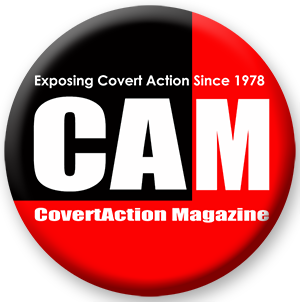
Peter Dale Scott, “The Dulles Brothers, Harry Dexter White, Alger Hiss, and the Fate of the Private Pre-War International Banking System,” Asia-Pacific Journal, April 20, 2014. ↑
Jeff Kisseloff, with foreword by Tony Hiss, Rewriting Hisstory: A Fifty-Year Journey to Uncover the Truth About Alger Hiss (Lawrence, KS: University Press of Kansas, 2025), 301. ↑
Kisseloff, Rewriting Hisstory, 269, 270. ↑
Murphy allegedly had Lovestone’s lover, Louise Page Morris, who worked for the CIA in Indonesia, working under him. See Ted Morgan, A Covert Life: Jay Lovestone: Communist, Anti-Communist and Spymaster (New York: Random House, 1999), 146-51, 260, 264-65. ↑
“Memorandum of Anti-Communist Foundation,” document provided to the author by Jeff Kisseloff. Peter Dale Scott, Deep Politics and the Death of JFK (Berkeley: University of California Press, 1993), 55, 289. H.P. Albarelli Jr., Coup in Dallas: The Decisive Investigation Into Who Killed JFK, with Leslie Sharpe and Alan Kent, foreword by Dick Rusell (New York: Skyhorse, 2021), 399, 449-451, 453, 454. Described by Princeton Unversity professor John V. Fleming as a “notorious reactionary if not outright fascist,” Levine collaborated with a Ryssian defector named Walter Krivitsky who died under mysterious circumstances. He is listed as Marina Oswald’s handler in the diary of Pierre Lafitte, a CIA assassin thought to be involved in the JFK assassination. Peter Dale Scott reports that C.D. Jackson, the publisher of Life Magazine and Allen Dulles, arranged for Levine to have Marina Oswald’s story fingering Lee as the lone nut assassin ghost-written for Life. Marina in fact had been coerced and repeatedly changed her story. According to Albarelli Jr., Levine was a member of the American Committee for the Liberation of the Peoples of Russia and American Friends of Paix et Liberté which were funded partially by the CIA, and CIA funded Tolstoy Foundation. The émigré program Levine was involved with was supported by Otto Skorzeny, a Nazi war criminal recruited by U.S. intelligence under the Operation Paperclip who, according to Albarelli Jr., participated in the JFK assassination. ↑
Kisseloff, Rewriting Hisstory, 265; Stephen Walter Salant, “Neutralizing ‘Ales’ Without Compromising Venona: What Really Happened to Alger Hiss,” Social Science Research Network, September 16, 2024. Schmahl’s December 1945 discharge from the Army as “over age” was likely staged to make him look as if he had separated from the Army when he had not. At the time, Schmahl was only 38 when the age cap was 44. Whenever an agent went undercover, some basis for discharge from the military was always concocted. ↑
Anthony Summers, The Arrogance of Power: The Secret World of Richard Nixon (New York: Viking, 2000), 73, 491; Jim Hougan Spooks: The Haunting of America: The Private Use of Secret Agents (New York: William Morrow, 1978), 289, 290, 291. Broady believed Schmahl to have been a Nazi, though Schmahl claimed this was untrue and that he had worked for the American Jewish Committee. In 1956, Schmahl—who for over two decades handled international work for the Department of Justice and the U.S. Attorney’s Office for the Southern District of New York—was questioned in connection with the disappearance of Jesús Galíndez. The latter was a Columbia University professor, who was kidnapped and murdered by agents of Dominican Republic dictator Rafael Trujillo whose family Nixon represented when he went into legal practice after losing the 1960 election. Schmahl had maintained surveillance on Galíndez. Earlier, Schmahl was involved in a Nixon-backed secret operation to thwart shipping magnate Aristotle Onassis’s efforts to develop a monopoly over the Saudi Arabian oil traffic. A private investigator named Jacob Spolansky described Schmahl to the FBI as a man of low integrity and “liar” who would “do anything for a dollar.” ↑
Summers, The Arrogance of Power, 73, 74. ↑
Kisseloff, Rewriting Hisstory, ch. 20. ↑
Kisseloff, Rewriting Hisstory, 287. ↑
Salant, “Neutralizing ‘Ales’ Without Compromising Venona.” Salant’s thesis is that military intelligence was convinced (rightly or wrongly) by Venona messages that Hiss was ALES and, in the interest of national security, found a way to neutralize ALES/Hiss without undermining its own Venona project by disclosing the real basis for its conviction that Hiss was ALES. Salant writes that Senator Daniel Moynihan (D-NY) in his capacity as chair of the Commission on Protecting and Reducing Government Secrecy, was given access to secret Army intelligence documents that made clear that the Army’s belief by June 1950 that Alger was ALES, prompting them to in turn initiate the neutralization operation. Daniel Patrick Moynihan, Secrecy: The American Experience (New Haven, CT: Yale University Press, 1999), 147. ↑
See Joan Brady, America’s Dreyfus: The Case Nixon Rigged (New York: Skyscraper Publications, 2015); John Lowenthal, “Venona and Alger Hiss,” Intelligence and National Security, 15, 3 (Autumn 2000), 98-130. ↑
Lowenthal, “Venona and Alger Hiss,” 112. ↑
Salant, “Neutralizing ‘Ales’ Without Compromising Venona.” The first judge in the case, Samuel Kaufman, recognized Hiss’s innocence, telling a friend years later: “You and I both know the man is innocent.” ↑
Kisseloff, Rewriting Hisstory, 175, 176. The ONI was reluctant to release any of its files pertaining to Chambers. ↑
Scott was for many years a professor of English at the University of California at Berkeley and has published many articles and books on the “deep state,” a term that he helped to coin. ↑
A graduate of the University of California at Berkeley, Phleger had been a naval officer in World War I who built his legal career defending employers against unions. In 1934, he represented the Waterfront Employers Association in their litigation against Harry Bridges’ longshoremen’s union which had led the 1934 San Francisco general strike. He also represented the family of William Randolph Hearst. After World War II, he was involved with the Nuremberg Trials and U.S. military occupation of West Germany. He was considered John Foster Dulles’s “closest and most valued colleague.” In 1962, he was appointed by President John F. Kennedy to the Committee to Strengthen the Security of the Free World, also known as the Clay Committee, which was tasked with formulating a foreign aid program for the year 1963. A director of the Union Oil Company, Phleger was a trustee of Stanford University and Mills College, one example of the close ties between the CIA, corporate America and academia. In the 1960s, ironically, he claimed to oppose the Vietnam war, stating that his belief that “our military intervention in Vietnam was planned as a step in the establishment of a permanent American military presence in Southeast Asia.” ↑
Scott, “The Dulles Brothers, Harry Dexter White, Alger Hiss, and the Fate of the Private Pre-War International Banking System;” Summers, The Arrogance of Power, 62, 63. ↑
Scott, “The Dulles Brothers, Harry Dexter White, Alger Hiss, and the Fate of the Private Pre-War International Banking System,” Jim Macgregor and John O’Dowd, Two World Wars and Hitler: Who Was Responsible? Anglo-American Money, Foreign Agents and Geopolitics (Walterville, OR: Trine Day Books, 2025), 558, 560. Prescott Bush was a future senator and father of President George H. W. Bush and grandfather of George W. Bush. ↑
Scott, “The Dulles Brothers, Harry Dexter White, Alger Hiss, and the Fate of the Private Pre-War International Banking System.” ↑
Idem. See also Summers, The Arrogance of Power, 63. Summers suggests that Nixon was tipped off about Hiss by the CIA, which passed intelligence to him through Thomas Dewey, the Republican presidential candidate in 1948. Summers notes that Nixon was also very close with J. Edgar Hoover, who hosted a fundraiser for him when he ran for vice president. The two were also seen together at the race track and at baseball games. Hoover secretly supplied Nixon with negative intelligence about other politicians. After Nixon lost the 1960 presidential election, Hoover was a sympathetic house guest. ↑
Scott, “The Dulles Brothers, Harry Dexter White, Alger Hiss, and the Fate of the Private Pre-War International Banking System.” Summers suggests that Dulles wanted Truman out of the White House. He quotes Truman who said, “what they are trying to do, all those birds [Dulles, Nixon, Hoover, et al.], they were trying to get Democrats. They were trying to get me out of the White House, and they were willing to go to any lengths to do it…They did do just about anything they could think of, all that witch-hunting…the constitution has never been in such danger.” Summers, The Arrogance of Power, 65.Kisseloff, Rewriting Hisstory, 88, 89, 277. As a young South Carolina congressman, Byrnes had been a close ally of Woodrow Wilson and supporter of his war policies. ↑
Kisseloff, Rewriting Hisstory, 274, 275. Fuller also did not like the direct federal government payments to Black sharecroppers in the South. ↑
John T. Donovan, Crusader in the Cold War: A Biography of Fr. John F. Cronin, S.S. (1908-1994) (New York: Peter Lang, 2005), 62; Summers, The Arrogance of Power, 66. Cronin’s extreme right-wing views were evident in his claim that U.S. Secretary of State Dean Acheson was deceived into following a communist policy that attacked General Douglas MacArthur, resulting in his firing by President Truman during the Korean War. ↑
Hougan, Spooks, 289, 290. Russell worked under Robert Stripling, a Nixon associate, at HUAC. Later, he was involved with James McCord, an old CIA associate, in the Watergate break-in and scandal. ↑
Kisseloff, Rewriting Hisstory, 105. ↑
Idem. ↑
Kisseloff, Rewriting Hisstory, 104. ↑
Hiss was mentioned as a future candidate for Secretary of State. ↑
A Washington journalist reported that everyone he talked with who had worked with Hiss in the government believed him innocent: “The general impression is that Hiss was never much of a radical.… I know no one who ever thought him a militant liberal, much less a Red.” [NOTE: Does the “Washington journalist” have a name? If it is John Lowenthal (the author of the article which is linked (line 1), he is not a journalist, but an attorney and law professor.] ↑
Kisseloff, Rewriting Hisstory, 49. ↑
Kisseloff, Rewriting Hisstory, 94. ↑
Hiss had organized a committee of bankers, lawyers, and business executives to support enabling legislation for the Marshall Plan. His anti-communism and support for the Cold War was evident in an article he wrote for The New York Times Magazine stating that “strategically, our abandonment of Europe would expose 270 million people and the world’s second greatest industrial complex to absorption in the vast area already dominated by Communist ideology and by Soviet interests.” ↑
Kisseloff, Rewriting Hisstory, 56, 57. ↑
Kisseloff, Rewriting Hisstory, 54. ↑
Kisseloff, Rewriting Hisstory, 177. ↑
Kisseloff, Rewriting Hisstory, 103. ↑
Kisseloff, Rewriting Hisstory, 87, 94, 97. Members of the Ware Group publicly stated their belief that Hiss was innocent of the accusations of espionage directed against him. Lee Pressman, who was associated with the Ware Group, went on to become an adviser to John L. Lewis, the first head of the Congress of Industrial Organizations (CIO) in its efforts to organize unskilled workers. He was also a lead investigator of the La Follette Civil Liberties Committee. Nathan Witt helped to establish the National Labor Relations Board on solid footing. Another member of the Ware Group, Henry Collins, was a decorated war hero who, in 1959, wrote The Complete Field Guide to American Wildlife. ↑
Kisseloff, Rewriting Hisstory, 108-10. William A. Reuben, who spent four decades researching the Hiss case, found that “the first thing to note about Whittaker Chambers’s confessions of Communist underground work is that it has never been corroborated, either by documentary evidence or by the word of another human being.” On December 3, 1948, on the eve of the pumpkin patch theatrics with Nixon, the Justice Department notified the FBI that an indictment of Chambers for perjury was being contemplated. ↑
Kisseloff, Rewriting Hisstory, 119, 120. Esther Chambers claimed that the Hisses had a pink living room when the room was in fact green. Numerous other things she said were shown by Kisseloff to be lies. Curiously, Chambers spent little time in jail and had her case dismissed after she committed vehicular manslaughter. Kisseloff suggested in a radio interview that Esther Chambers could have been offered a deal by which her case was dismissed if she testified against Hiss. ↑
Kisseloff, Rewriting Hisstory, 113, 128, 129, 130, 174. Documents also were not supposed to be obtained more than once a month from the same intelligence source. With regard to the typing, neighbors Kisseloff and other researchers spoke to said they heard Tim Hobson’s piano playing, and when a sportswriter moved in after the Hisses left, they heard his typing as clear as day—but never heard Priscilla typing. The typewriter presented also at trial was in perfect condition when the Hisses would have been worn down. ↑
Kisseloff, Rewriting Hisstory, 131. The sloppiness of the operation described by Chambers went against Hiss’s reputation as a man of prudence and discipline, punctilious about intelligence and security rules of procedure. A former British secret service officer remarked: “Chambers’s story is wildly improbable—a defiance of strict basic safety rules imposed by the Soviet Secret Service on its agents….If Hiss were guilty…it is impossible to understand why a man of such high intelligence, and in a position where a hint of treachery could—and, in fact, did—hit the headlines overnight, omitted the most elementary precautions to protect himself.” FBI surveillance of Hiss over years uncovered not one bit of evidence linking him or members of his fmaily to espionage in any way. ↑
Kisseloff, Rewriting Hisstory, 74. ↑
Chambers told an entirely different story about how they met that Kisseloff finds to be implausible. ↑
Kisseloff, Rewriting Hisstory, 107. ↑
Kisseloff, Rewriting Hisstory, 187. ↑
Kisseloff, Rewriting Hisstory, 107. ↑
Kisseloff, Rewriting Hisstory, 150. ↑
Kisseloff, Rewriting Hisstory, ch. 9; Brady, America’s Dreyfus. ↑
Kisseloff, Rewriting Hisstory, 159. ↑
Kisseloff, Rewriting Hisstory, 153. ↑
Kisseloff, Rewriting Hisstory, 166. ↑
Kisseloff, Rewriting Hisstory, 265. ↑
Lowenthal, “Venona and Alger Hiss,” 111. When Lowenthal showed the FBI’s typewriter evidence to Gussie Feinstein, a juror from the second trial, she said, “Here’s a man that might have been proven innocent and not guilty, if the jury had known that the typewriter that was presented to us in the courtroom actually wasn’t the Hisses’ typewriter….The jurors were hoodwinked.” ↑
Kisseloff, Rewriting Hisstory, 116. ↑
Kisseloff, Rewriting Hisstory, 118. ↑
Kisseloff, Rewriting Hisstory, 193. ↑
Lowenthal, “Venona and Alger Hiss,” 111. ↑
Kisseloff, Rewriting Hisstory, 254. ↑
Lowenthal, “Venona and Alger Hiss,” 108. ↑
Kisseloff, Rewriting Hisstory, 244, 245; Lowenthal, “Venona and Alger Hiss,” 105, 106. Chambers’ original accusations had also centered on the Ware Group. ↑
Ibid. ↑
Lowenthal, “Venona and Alger Hiss,” 109. ↑
Kisseloff, Rewriting Hisstory, 250. Chambers had never actually accused Hiss of being a paid spy, only of passing documents as part of a spy network. ↑
Lowenthal, “Venona and Alger Hiss,” 115. ↑
Dulles had first met Field in Zürich in 1918 at the home of Field’s father. The two had often seen each other in Washington, D.C., when both worked at the State Department. Dulles hoped Field could use his Communist connections in Switzerland and Germany to shed light on Stalin’s post-war objectives in Europe, and may have helped set up his arrest to undermine and sow chaos in an Eastern Bloc country and to try and humiliate the Soviet Union. The latter was suggested by journalist David Talbott. He believes that Field was set up by Dulles to help stoke anticommunist hysteria in the U.S. Part of the ploy could have been to try to plant further disinformation in the U.S. media or elsewhere about Hiss. For more on Field, see Tony Sharp, Stalin’s American Spy: Noel Field, Allen Dulles and the East European Show Trials (London: Hurst, 2014). Sharp hints that Field may have been an American spy sent by Dulles to penetrate the communist movements in Eastern Europe. ↑
Kisseloff, Rewriting Hisstory, 208. ↑
Kisseloff, Rewriting Hisstory, 152. ↑
Scott, “The Dulles Brothers, Harry Dexter White, Alger Hiss, and the Fate of the Private Pre-War International Banking System.” ↑
Kisseloff, Rewriting Hisstory, 154. ↑
Idem. ↑
Salant, “Neutralizing ‘Ales’ Without Compromising Venona.” ↑
Lowenthal, “Venona and Alger Hiss,” 105, 106. ↑
Kisseloff, Rewriting Hisstory, 265. Klehr is a professor of history and politics at the prestigious Emory University in Atlanta. He claims that his background is in the political left. ↑
Lowenthal, “Venona and Alger Hiss,” 120. ↑
Hiss died in 1996. He spent the last 30 years of his life trying to reverse his conviction and to restore his public reputation. ↑
CovertAction Magazine is made possible by subscriptions, orders and donations from readers like you.
Blow the Whistle on U.S. Imperialism
Click the whistle and donate
When you donate to CovertAction Magazine, you are supporting investigative journalism. Your contributions go directly to supporting the development, production, editing, and dissemination of the Magazine.
CovertAction Magazine does not receive corporate or government sponsorship. Yet, we hold a steadfast commitment to providing compensation for writers, editorial and technical support. Your support helps facilitate this compensation as well as increase the caliber of this work.
Please make a donation by clicking on the donate logo above and enter the amount and your credit or debit card information.
CovertAction Institute, Inc. (CAI) is a 501(c)(3) non-profit organization and your gift is tax-deductible for federal income purposes. CAI’s tax-exempt ID number is 87-2461683.
We sincerely thank you for your support.
Disclaimer: The contents of this article are the sole responsibility of the author(s). CovertAction Institute, Inc. (CAI), including its Board of Directors (BD), Editorial Board (EB), Advisory Board (AB), staff, volunteers and its projects (including CovertAction Magazine) are not responsible for any inaccurate or incorrect statement in this article. This article also does not necessarily represent the views the BD, the EB, the AB, staff, volunteers, or any members of its projects.
Differing viewpoints: CAM publishes articles with differing viewpoints in an effort to nurture vibrant debate and thoughtful critical analysis. Feel free to comment on the articles in the comment section and/or send your letters to the Editors, which we will publish in the Letters column.
Copyrighted Material: This web site may contain copyrighted material the use of which has not always been specifically authorized by the copyright owner. As a not-for-profit charitable organization incorporated in the State of New York, we are making such material available in an effort to advance the understanding of humanity’s problems and hopefully to help find solutions for those problems. We believe this constitutes a ‘fair use’ of any such copyrighted material as provided for in section 107 of the US Copyright Law. You can read more about ‘fair use’ and US Copyright Law at the Legal Information Institute of Cornell Law School.
Republishing: CovertAction Magazine (CAM) grants permission to cross-post CAM articles on not-for-profit community internet sites as long as the source is acknowledged together with a hyperlink to the original CovertAction Magazine article. Also, kindly let us know at info@CovertActionMagazine.com. For publication of CAM articles in print or other forms including commercial internet sites, contact: info@CovertActionMagazine.com.
By using this site, you agree to these terms above.
About the Author

Jeremy Kuzmarov holds a Ph.D. in American history from Brandeis University and has taught at numerous colleges across the United States. He is regularly sought out as an expert on U.S. history and politics for radio and TV programs and co-hosts a radio show on New York Public Radio and on Progressive Radio News Network called “Uncontrolled Opposition.”
He is Managing Editor of CovertAction Magazine and is the author of six books on U.S. foreign policy, including Obama’s Unending Wars (Clarity Press, 2019), The Russians Are Coming, Again, with John Marciano (Monthly Review Press, 2018), Warmonger. How Clinton’s Malign Foreign Policy Launched the U.S. Trajectory From Bush II to Biden (Clarity Press, 2023); and with Dan Kovalik, Syria: Anatomy of Regime Change (Baraka Books, 2025).
Besides these books, Kuzmarov has published hundreds of articles and contributed to numerous edited volumes, including one in the prestigious Oxford History of Counterinsurgency .
He can be reached at jkuzmarov2@gmail.com and found on substack here.
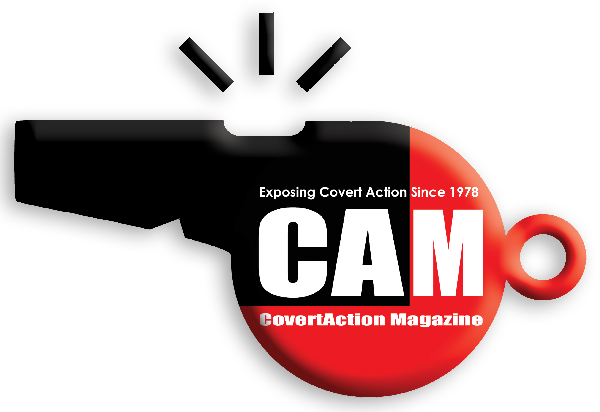

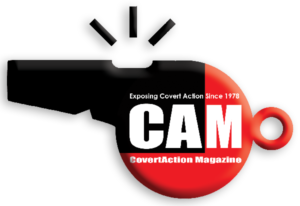
Nixon reportedly saw the live television shooting of Lee Harvey Oswald and recalled that Jack Ruby had been introduced to him many years earlier as ‘one of Lyndon Johnson’s boys’. And that is what triggered his suspicion that Lyndon Johnson was behind the JFK assassination.
His efforts to confirm the link by examining CIA files on the matter would be a great source of tension between him and the CIA during his presidency.